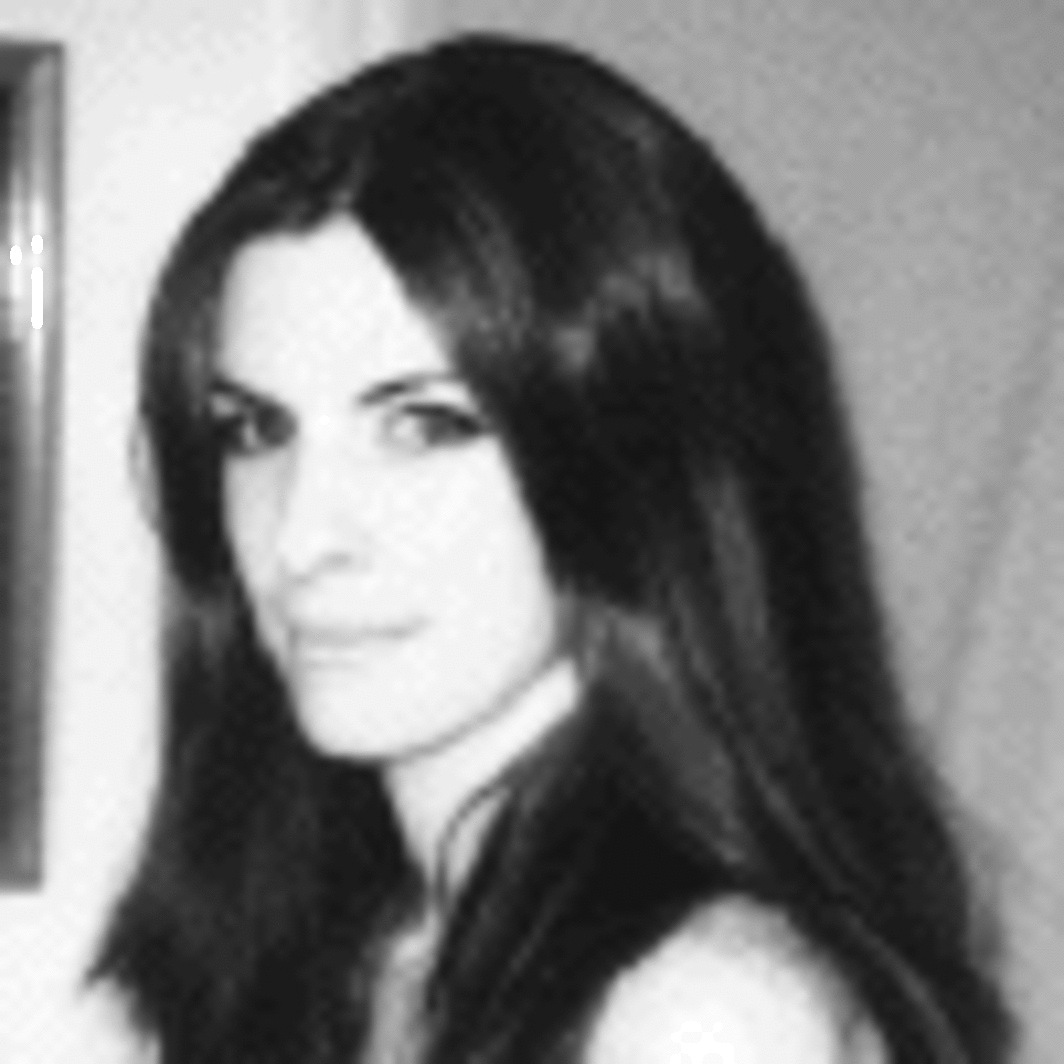
‘Late in 2007, I went repeatedly to Tate Modern’s exhibition The World as a Stage, primarily to see one small black-and-white photograph – or, rather, a series of 31 small black-and-white photographs presented one at a time and, as per the artist’s instructions, rotated daily: Trisha Donnelly’s The Redwood and the Raven (2004). The experience of this staggered, witchy display, which documents the headscarf-wearing dancer Frances Flannery performing, against a tree in a forest, a dance called ‘The Raven’, choreographed to Edgar Allen Poe’s eponymous 1845 poem, was borderline perverse: you couldn’t grasp the moves, hear the poem or precisely remember the previous images you saw, so that the additive melded continually with the subtractive. (The raven in the poem famously answers queries with ‘nevermore’.) You wanted more, aware that the more you got would equate to less. This, I already knew, was the American artist’s conceptual wheelhouse: earlier that year, in Manchester, I’d seen her deliver a drum-pounding, soprano-screaming, incantatory performance, The Second Saint, at Hans Ulrich Obrist’s and Philippe Parreno’s performance-art extravaganza Il Tempo del Postino, a fully confident yet, for all its noise, muted display, ending with the fall of four black obelisks, that resides in my memory as a roaring blank abstraction.
‘Hers is a chess-playing art, one of timing and artfully mobilised viewer psychology
‘But then methodically parsing the actions, objects and images proffered by the forty-year-old, San Francisco-born Donnelly, who has now returned to London with a solo exhibition at the Serpentine Galleries, is not really the point. Thinking about them as interacting systemic units and conjectures about shaped reality, the fungible nature of space and time, and the strictures of art reception is more fruitful. Hers is a chess-playing art, one of timing and artfully mobilised viewer psychology; or at least that’s where it starts. In her New York solo debut at Casey Kaplan in 2002, Donnelly rode into the opening on a white horse, dressed in Napoleonic garb, and, acting as ersatz courier, delivered the oration that the French emperor supposedly should have given at the Battle of Waterloo: ‘If it need be termed surrender, then let it be so, for he has surrendered in word, not will. He has said, “My fall will be great but it will be useful.” The emperor has fallen and he rests his weight upon your mind and mine and with this I am electric. I am electric.’ (Eyewitness critic Jerry Saltz wrote that here Donnelly ‘stole my aesthetic heart’, while reckoning that the performance rather outweighed the show itself.)
‘By 2005, Donnelly didn’t even require a real horse; stage-managed rumour was enough. At the opening of a show at the Kölnischer Kunstverein celebrating a major artist’s prize she’d won, word ‘got around’ that another steed was waiting somewhere in the institution, that Donnelly would perform – and the artist, curator Beatrix Ruf remembers, left the preview dinner a few times to reinforce the idea. It never happened, but the very possibility coloured the event. This, in microcosm, is what Suzanne Cotter has called Donnelly’s ideal of the ‘uncontrived encounter’, something Donnelly herself calls ‘natural use’ and which is the carefully controlled outcome of so much of her work (which, in a gesture of imperial defeat that is also a gift, then abdicates control): a process that, though the description may sound hyperbolic, comes closer to a suggestion of opening up space and time, with visibly disproportionate means, than almost any of Donnelly’s contemporaries. See, for example, Hand That Holds the Desert Down (2002), in which a black-and-white detail of one of the paws of the Great Sphinx at Giza flips, via titling, into a vertiginous recasting of gravitational reality, though a proposition whose supporting wires are blatantly evident.
‘Donnelly’s art has prowled, avoiding resolution, around stormy transcendence from the outset: the first work of hers I remember seeing (and not being particularly struck by: her work has to accrete in the mind) was Untitled (Jumping) (1999), made before she graduated from Yale in 2000, in which she imitates, while moving in and out of the video frame, a variety of musicians in states of musical rapture. Her art since, which encompasses soundworks, actions, lectures, drawings, sculpture, photography and more video, continually stresses the possibility of – to quote the Bard – there being more in heaven and earth than is dreamt of in our philosophy. Or in our artworld, which has a schizoid relationship nowadays to the esoteric and occult, liking it when historical – Hilma af Klint, say – but not so much when offered without irony or a sense that certain ancient fires haven’t yet gone out. The thematic framework Donnelly has set up charges even her most outwardly slim works with electricity and expansive portent. The Napoleon theme, for example, continued in The Vortex (2003), which featured a recording of the Slavyanka Russian Men’s Chorus singing Lermontov’s poem ‘Borodino’ (1837), named after a gruesome battle of the Napoleonic wars. What this added was perhaps just another line of code, though it also aimed at an experience of synaesthesia (see the anticipatory text ‘The Vortex Notes’, 2002, which advised following the highest male voice and feeling it ‘compress like a photograph’) and dragged a vast historical event into the artwork’s orbit, resituating it in the twenty-first century as a question that is particular and also diffuse. Her sculptures involving carving into quartzite, she’s said, relate to ‘the enacting of processes of loss in geological time’: entertain that, and millennia fall away as you look.
‘The thematic framework Donnelly has set up charges even her most outwardly slim works with electricity and expansive portent
‘Or, rather, they might. Again, it’s characteristic of Donnelly’s art that one simultaneously falls under the spell and has a sense, related to critique, of how the spell is cast. What’s likely is that no spell at all, or at best a pale shadow of a spell, is cast if this art is received secondhand, and here her work twists uncharacteristically polemical. In an age where so much art is experienced – if that’s even the word – through online aggregators and through documentation, Donnelly’s art insists on being taken in real time and real space, so that it can ask what those things even are. It’s presumably to this end that she has given up doing interviews – we asked, and were politely rebuffed; a 2010 in-gallery interview she did with Anthony Huberman apparently most often featured the response ‘pass’, with Donnelly playing tracks from her iPod in lieu of other answers – while her catalogues don’t usually feature essays and her press releases can veer strongly away from the interpretative. When a visitor attending her 2002 Kaplan show requested more info, he or she would be played some electronic beats. The PR handout for her poised, codified-feeling 2010 exhibition at Portikus, Frankfurt, with its sequence of leaning incised marble reliefs, drawings and video, purports to be a press text but is a list of titles and media.
‘Art today comes with an accompanying explanation that actively disarms the viewing experience, rationalising appears to be the last thing Donnelly wants
‘This matters: one might wish it to be exemplary, except that it is turf that Donnelly almost owns and that, to mix metaphors, would become hackneyed fast. So much art today, as we’re all aware, comes with an accompanying explanation that actively disarms the viewing experience, rationalises it, and rationalising appears to be the last thing Donnelly wants: her art, in its myriad margin-directed speculations, says there’s too much of that already, and not enough that, to paraphrasTrisha Donnelly @ Air de Parise that horseriding ensign, really rests its weight upon your mind and mine. Think for a second about how few artists actually sustain this quality of tactical, shape-changing surprise and risk. David Hammons would be one, Lutz Bacher another; there are not that many others. Meanwhile galleries and fairs clog with frictionless production lines. Donnelly operates, conversely, a continual transitive process, new works adjusting old ones, the full picture held back: Black Wave, a 2002 photograph of a wave about to crest, feels like it might be metonymic both in its minimal ominousness and its forceful incompletion.’ — Martin Herbert
___
Further
Trisha Donnelly @ Matthew Marks Gallery
Trisha Donnelly @ Air de Paris
The Beguiling Desolations Of Trisha Donnelly
Trisha Donnelly Sculpts in Four Dimensions
Trisha Donnelly by Katherine Siboni
OPENINGS: TRISHA DONNELLY
Trisha Donnelly’s inscrutability is legendary.
Trisha Donnelly Mixtape
Wavelength: On Drawing and Sound in the Work of Trisha Donnelly
The Image of Trisha Donnelly at Matthew Marks
If It Need Be Termed Surrender: Trisha Donnelly’s Subjunctive Case
Trisha Donnelly and the Infinite Potential of Video Art
____
Extras
Trisha Donnelly
trisha donnelly looped 4 times
________
Interview
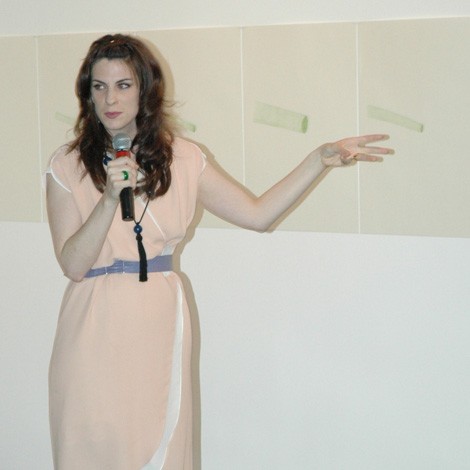
Hans Ulrich Obrist: The interview happens now at the corner of rue Jacob and rue Bonaparte. Already this interview goes completely circular and reminds me of your favorite message from The Young Ones [British TV series, 1982-1984].
Trisha Donnelly: Oh yes. “Meanwhile, the next day.” It’s a break of narrative formula, usually for film, TV or radio. Something is happening in the plot and normally the device is to say, “and the next day” or “meanwhile in Paris” or “meanwhile in Los Angeles.” In The Young Ones, in between the change of a scene, all of a sudden it says, “meanwhile, the next day.” It reversed the function after that, but of course then you realize the next day is the projected idea of the next day.
HUO: Rirkrit Tiravanija would say “tomorrow is another fine day.” It’s a very Buddhist sentence.
TD: It’s true. But then you don’t have a past but you have a future. So “meanwhile, the next day” I think is a simple validation of the space and time continuum suggestion.
HUO: You said this is a totally historical and indestructible idea.
TD: I think that when you have a phrase that names the next day as being the past it is completely indestructible. Once you say that tomorrow is the past, it is indestructible. The duality of any day is that it is bookended by the ideas of the previous day and the day to come. In some ways it seems our memory is much simpler than we think, so we project memory into the future. We have a memory of the future…
HUO: Recently Stephanie Moisdon curated a show that included your first piece. Can you tell me about it?
TD: It was called She Said (1989). Funny. I was sixteen and came to understand the object nature of “ ”. If you have words and they are said, then they are said and they stay in the environment like a load of mass. She Said is about the first time I understood that; it was the same sensation as mass. So it’s the side of a chair and it just says “She Said” painted on it.
HUO: Could you talk about your drawings?
TD: I think that they relate to objects the way that you listen to the radio, if you have a radio on. I draw when the radio is on. When I’m drawing, I just wait a really long time because I have to do the right thing. So I don’t draw all day, but when I have the thing I am supposed to be drawing, I draw all day and all night.
HUO: It comes from an object or it comes from an idea?
TD: Both. Sometimes it comes from the sight of an object; sometimes sight is virtual. Some of the objects are sounds; some of the sounds are drawings, but I think that the drawings that I do are more of a physical realization of what I am thinking of than of myself (i.e., an action). Drawings can be a more intense version of the presence I think. They can act as actions. They are worse. More horrible. More distant.
HUO: We have [Musée d’Art Moderne, Paris] two drawings published in the catalogue I Still Believe in Miracles. Can you tell me about them?
TD: Well, one is Untitled. This drawing is of an extinct object, which is this specific act of unlatching on a leg. It’s an action that is extinct because people don’t know how to put them on or take them off anymore because they are not worn. Every time somebody would ask at the place where it was shown, “What is that?” the person who works there has to show them: “it is…” So Untitled is that. And the other one is The Vortex (2001), which is the beginning of something I understood very simply with physical space. You know when some people see the color red they have a fit, which they think separates them from the normal world. It’s a physical response to the visual. So the vortex is something that I have understood as one of those thresholds.
HUO: Rupprecht Geiger, the more than ninety-year-old German painter, for many decades developed an almost obsessive attraction to the color red. There is a physical aspect to red.
TD: I think perhaps red is our most physically humanly understandable color because it’s the first time we see ourselves dying. Blood pouring out.
HUO: So The Vortex has to do with perception.
TD: It’s more than that, I think. It’s not even as much perception, but it’s imperceptible motion: you realize that you physically move through the viewable image. The corresponding piece is a demonstration — also called The Vortex (2003) — I did which consists of a Russian song where if you link the highest man’s voice and the lowest man’s voice you can build a vortex in your mind. When I play the song and I state the formula, each member of the audience builds a sculpture in their mind that is like a vortex. So you have hundreds of these built and rendered, point-placed never-ending vortexes in people’s minds. Hundreds of sculptures. I consider it more of a sculpture. A mass.
HUO: The drawing is a trigger for vortex. It is not an object in this regard.
TD: It’s not. But a vortex is never an object; it’s something else. We don’t have a word for this. It’s the same problem when you don’t have a word for “not performance.” It is not performance.
HUO: Cartier-Bresson told me the last time I interviewed him: “Photographs should be more seen in books than polluting too many walls.” The same thing is true for the way you use drawings and photographs; they are rare instances. It is against pollution.
TD: Yes. I think polluting something displays that you are sure of things and mortally terrified. Every time you make a piece of work you have to ask if it really needs to exist in the world and should you do the deed of adding more shit to the world. I write every day; that’s more where I do my everyday obsessive habit.
HUO: So, the writing, the texts are a daily practice for you.
TD: Yes, the texts. They also take a long time. Sometimes I begin a text one year and then I finish it in four years.
HUO: I am very interested in this link from art to literature and poetry because art has created all kinds of bridges in the recent years to music, to cinema, but the link to literature is too rare. Your own is a very rare instance of bringing back that link to poetry, and what is interesting is that poetry is maybe the only art form that has not been recuperated by the market.
TD: It never will be. The only time it had a possibility was in advertising, which has beautiful stuff sometimes. But poetry has regained its status in a way: as people believing that it has a compression that is important. It’s both horrible and perfect simultaneously.
HUO: And you are a native daughter of San Francisco, which is a city of poetry; I think of City Lights Bookstore and the whole beat generation. Have these people been important for you?
TD: No, actually, not at all. I was not so much a beat fan. Unless you could call Gertrude Stein a beat. But it’s a different temperament.
HUO: And who are your heroes in poetry?
TD: I love Ahkmatova, Marianne Moore, H.D., Michaux and I love Yeats because I have an obsession with the Irish disaster, the feelings of disaster. If a text’s category is somehow loosely dependent on structure then so many things can fall into and out of the form. I had a kind of dumb attraction to film moments in poetry. I grew up watching films that were already old. We weren’t allowed to watch TV so we watched John Wayne’s films, Gary Cooper’s films, classic westerns, so I think there would be these epic statements that act as catalysts more than like a constructed poem. John Wayne would walk into a space and say something and then the entire film would shift. The film in this type of action set up is literally built for and around his lines. Set-up lines, to wind its way around the text. The mass of the word. It is kind of like this basic masculinity, mutuality and intensity that are like an explosive statement, the low-grade hesitation and the verbal release. Some films have shorter leashes for this type of thing and make a faster dialogue. Snap you back in quicker. So, if you could build poetry that had a function to move a plot or a story, that was what I found really incredible. But you know I think I was looking for it. I needed to translate it into that structure. It’s text with camera movement built in, understood as part of the formula, like writing with the correct sense of punctuation.
HUO: You film when you travel. You were filming here in Paris too. What about your filmmaking? Is it a daily practice for you?
TD: It’s a daily accidental thing. The camera is palm sized. I never think about it.
HUO: Can you tell me about your bigger photographs?
TD: Some big, some small. The big ones are more like architecture. So polluting with columns. We should have a problem with photography. That’s all I know.
___
Show
Untitled, 2008
video, 4 minutes, looped
Untitled, 2005
DVD, 20 seconds, looped

Untitled, 2011
‘In the final analysis, maybe, numbers, far from facilitating a purely scientific approach, actually contribute to the depth of the world. Like the letters in a novel, they could be seen as constituting not only its secret grammar, its skeleton – the dream of a mathesis universalis – but also its flesh. Not so much marking out time as filling it. With each layer of time a notch to be noted, a stratum of meaning to be read, a space in its own right: gone the distinction between the acts of reading, counting and contemplating a landscape.’


Untitled, 2007
Synthetic polymer paint on paper and pencil on three sheets of paper

Hand that Holds the Desert Down, 2002
‘In Hand That Holds the Desert Down (2002), a black-and-white detail of one of the paws of the Great Sphinx at Giza flips, via titling, into a vertiginous recasting of gravitational reality, though a proposition whose supporting wires are blatantly evident.’
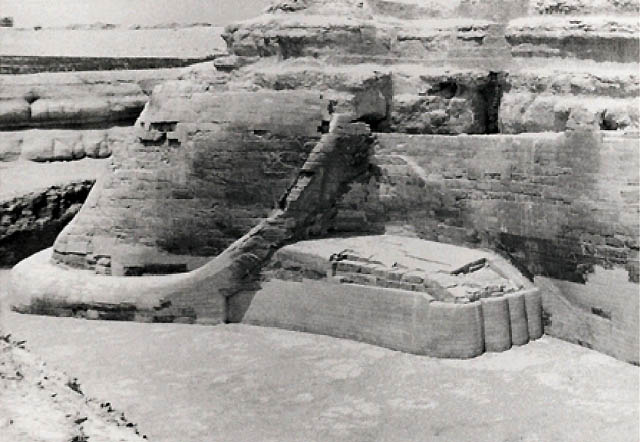
Satin Operator, 2007
‘Across a sequence of thirteen digital prints, the torso of a woman slowly rotates as if photographed in stop-motion: first we see the back of her head, then the side of her face; in this print—the sixth in the series—her eyes meet ours. As her gaze locks with the viewer’s, there is the potential for a brief act of exchange—if only for an instant. To make these images, the artist modified the glass bed of a digital scanner to turn it into a device that would record with an almost three-dimensional, tactile vision.
‘Of her intentions in this series, Donnelly has written, “I thought if you could hit that nexus in the axis of the slow path of two tubular forms either lightening or reflecting (or eating) the projected image, you could expand the thing: into some zone between the film-pattern-flash phenomenon of motion and the paralyzed known of the photographic still. Somewhere in there was a newer dimension I had hoped to catch on paper or file.”’
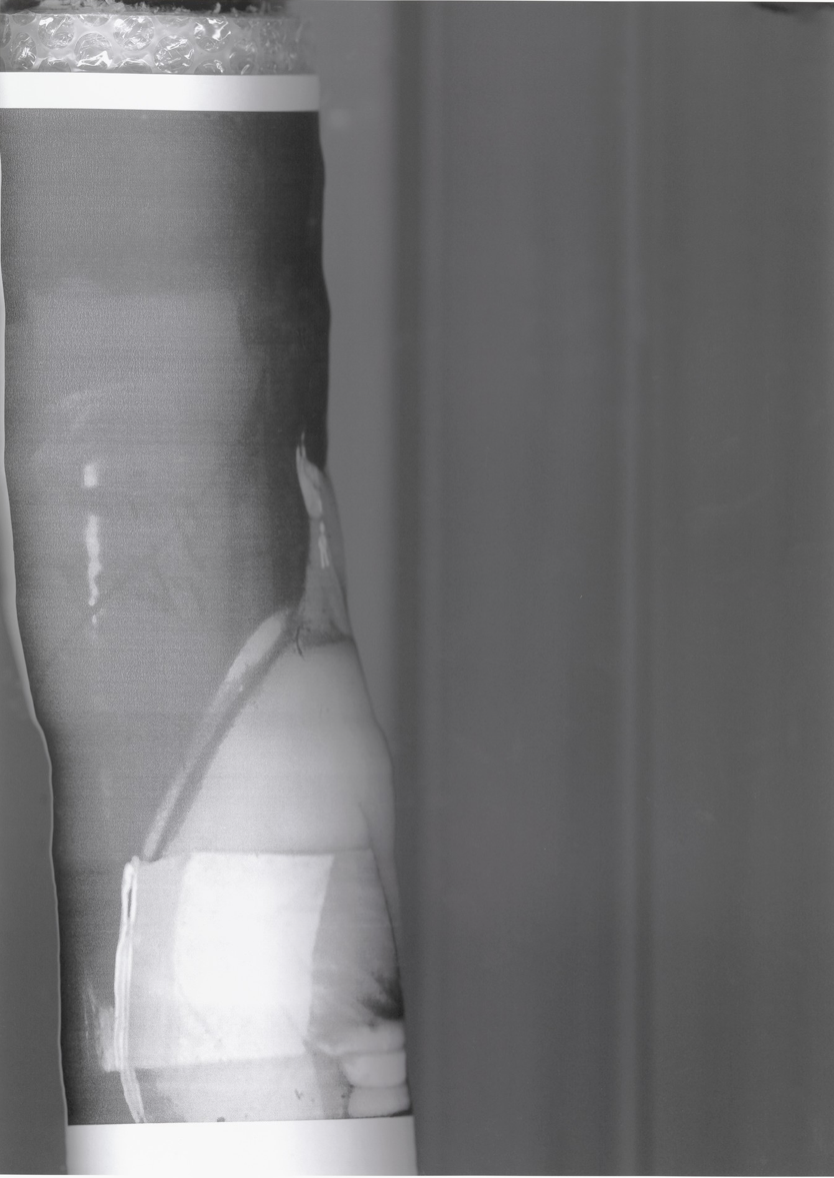
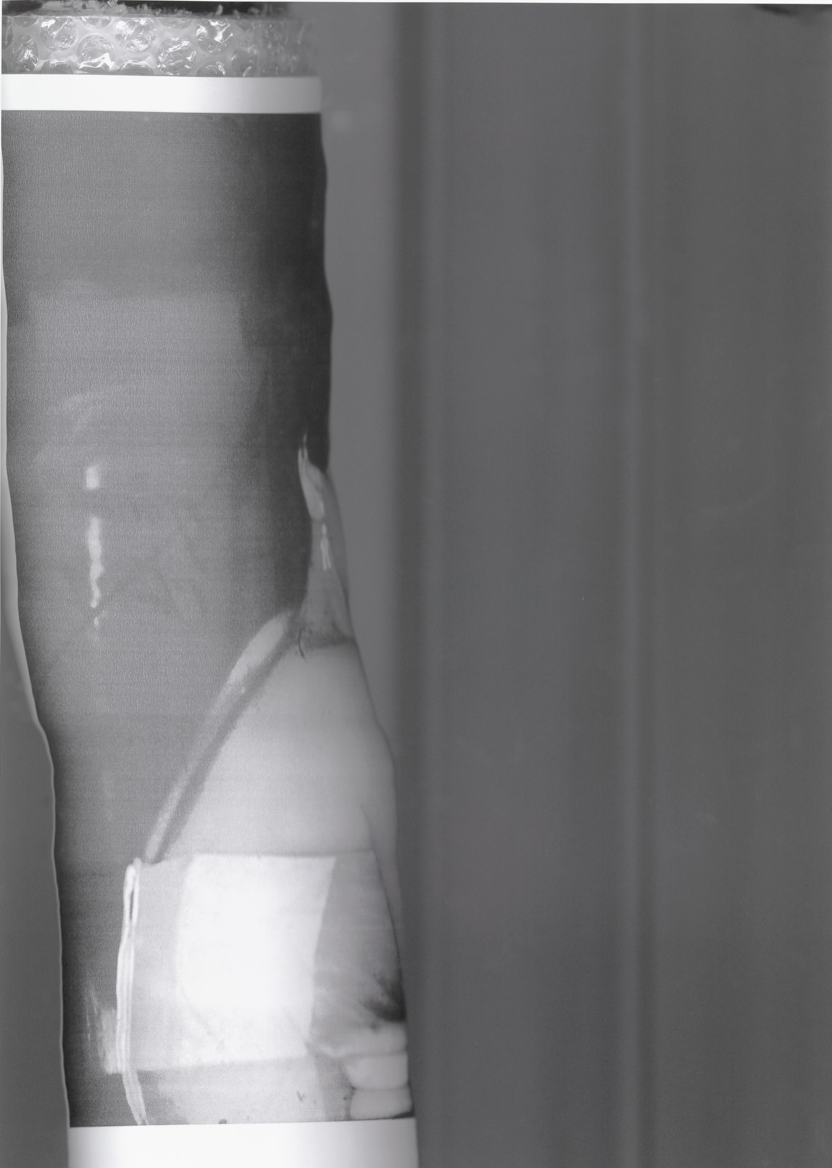

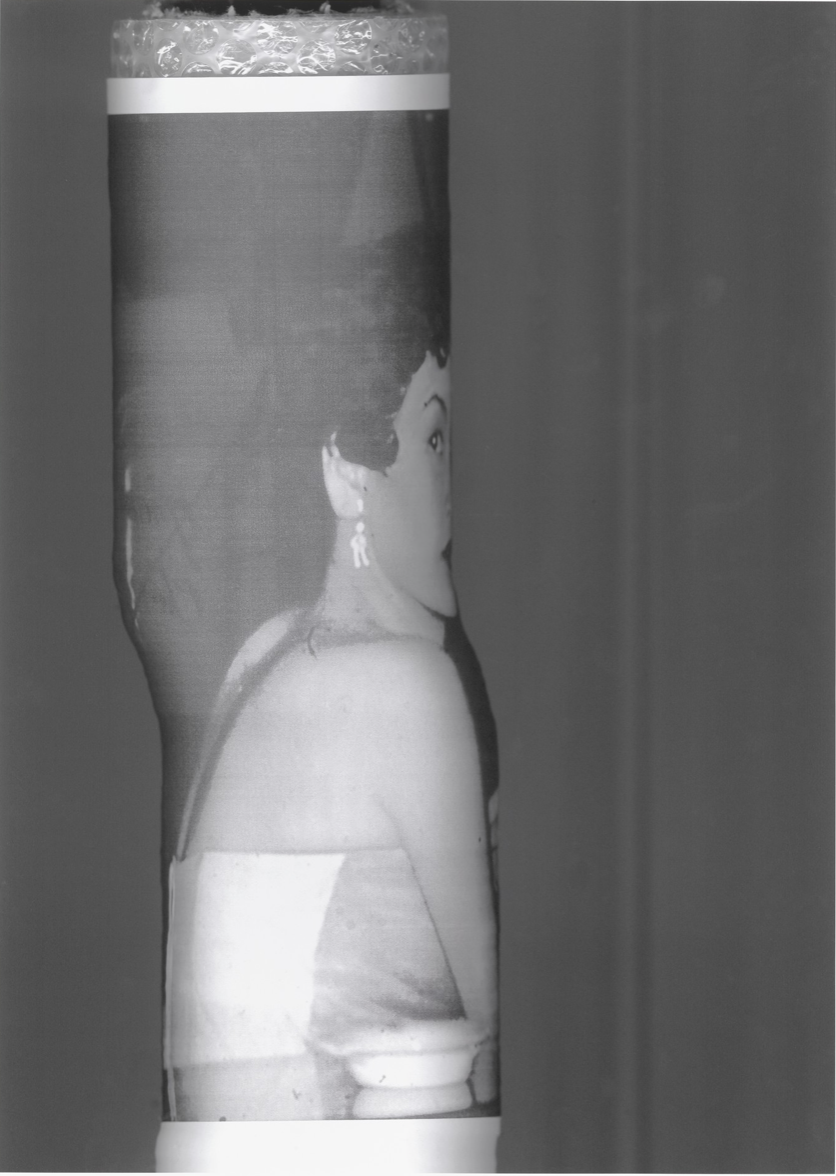
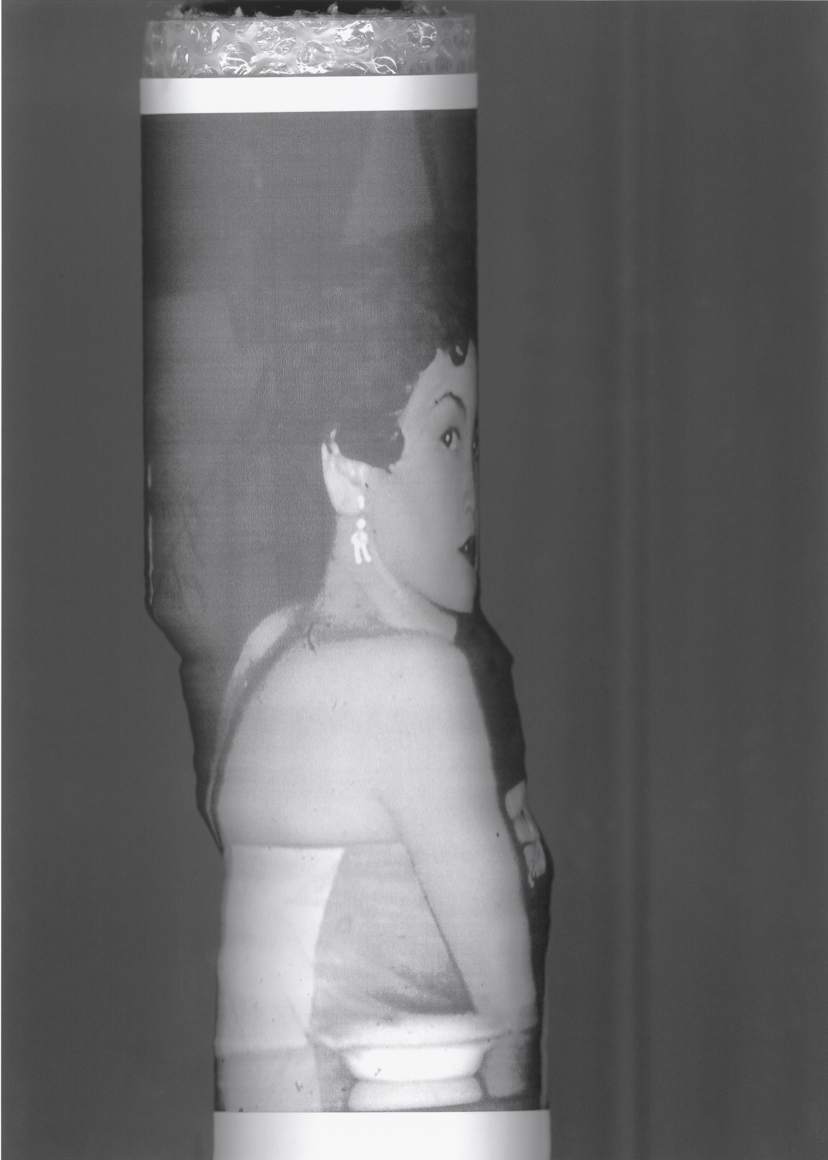

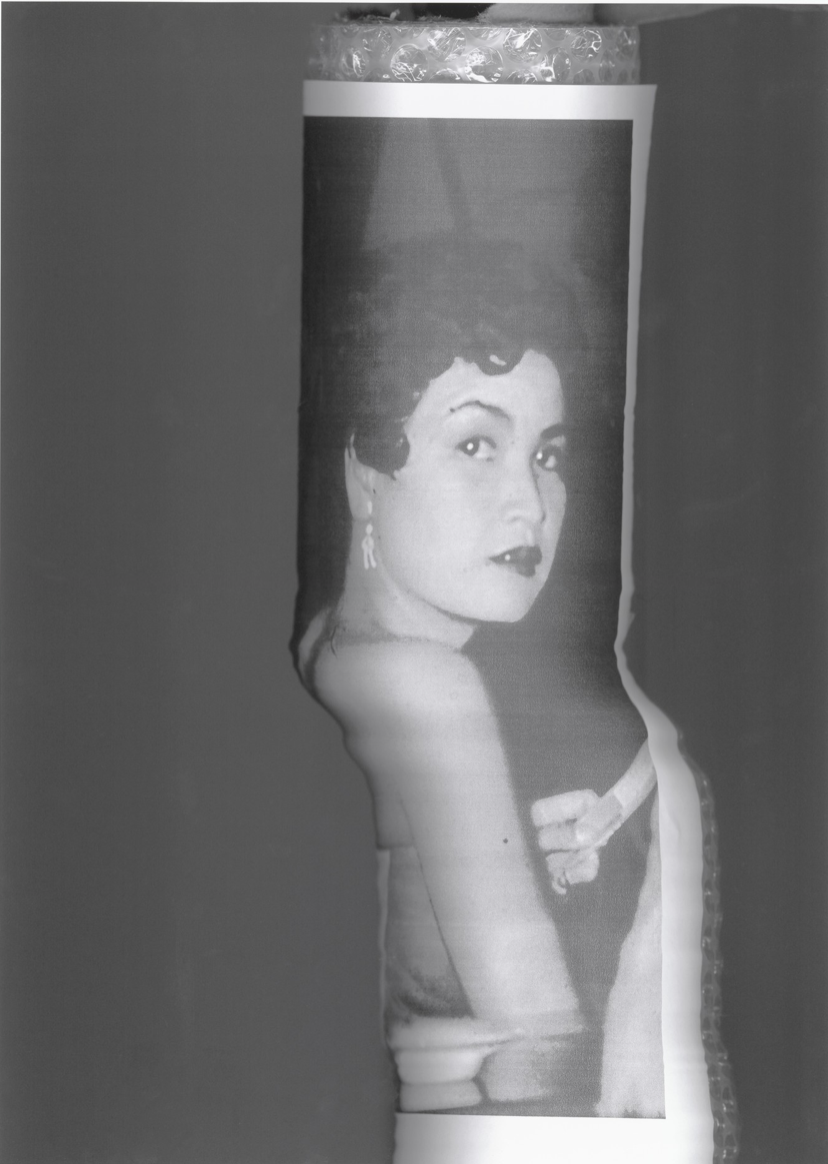
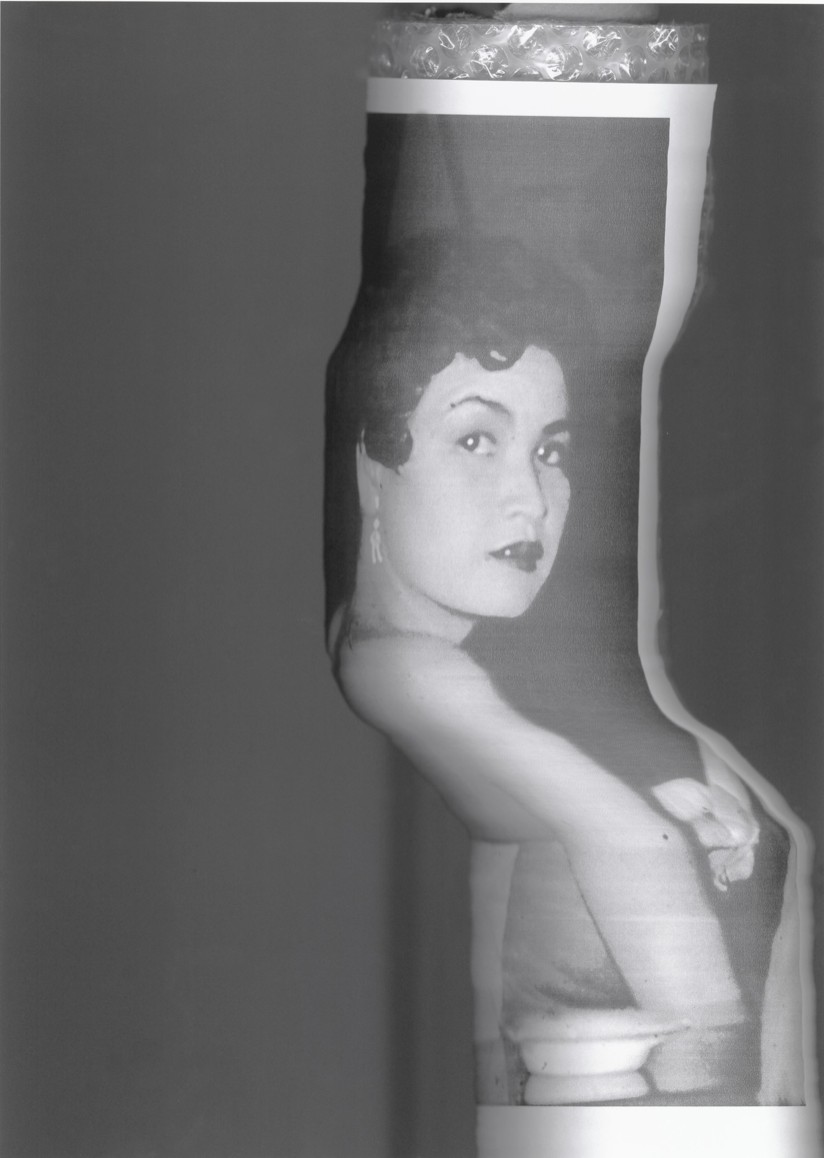
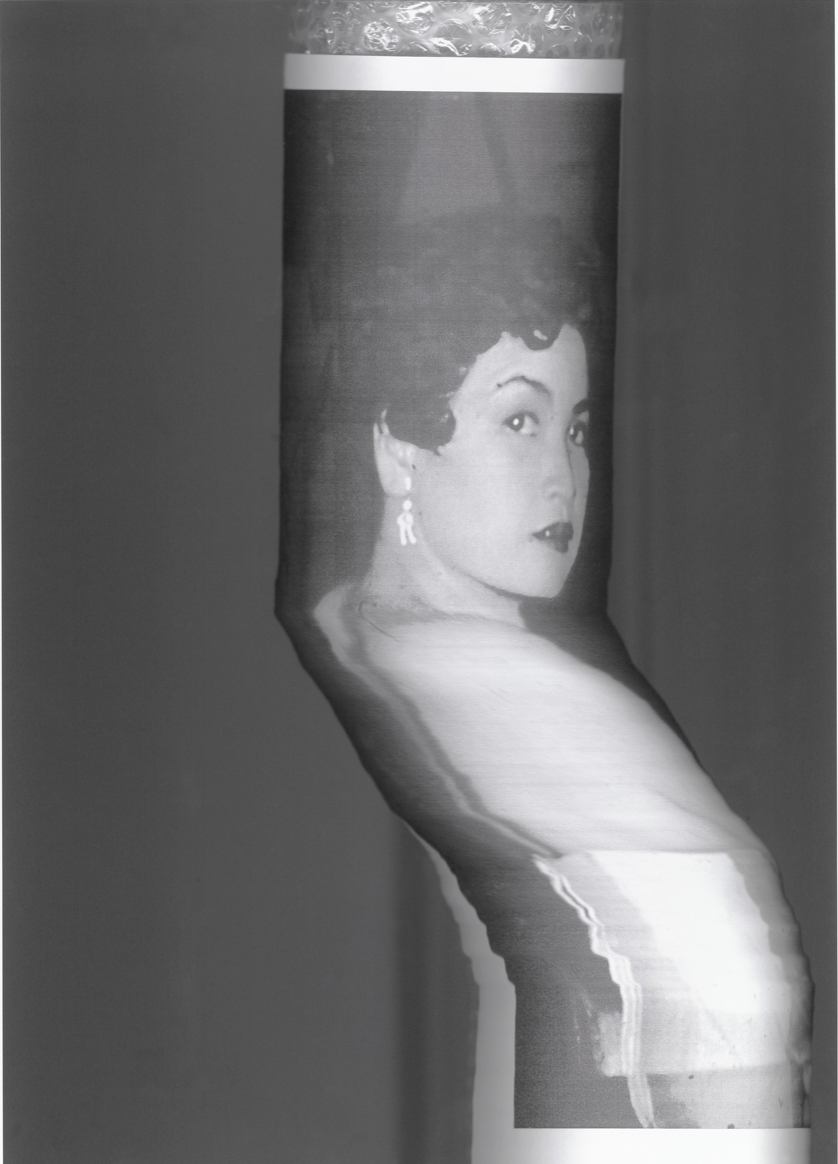
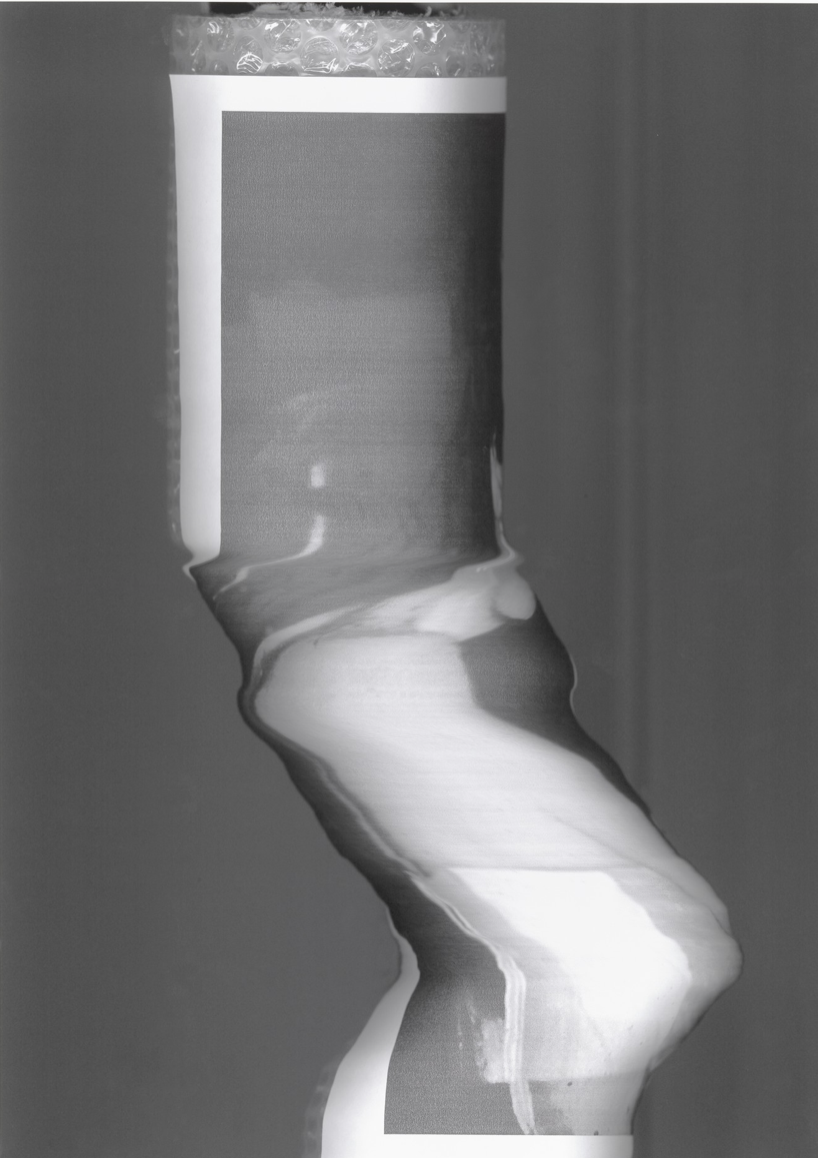

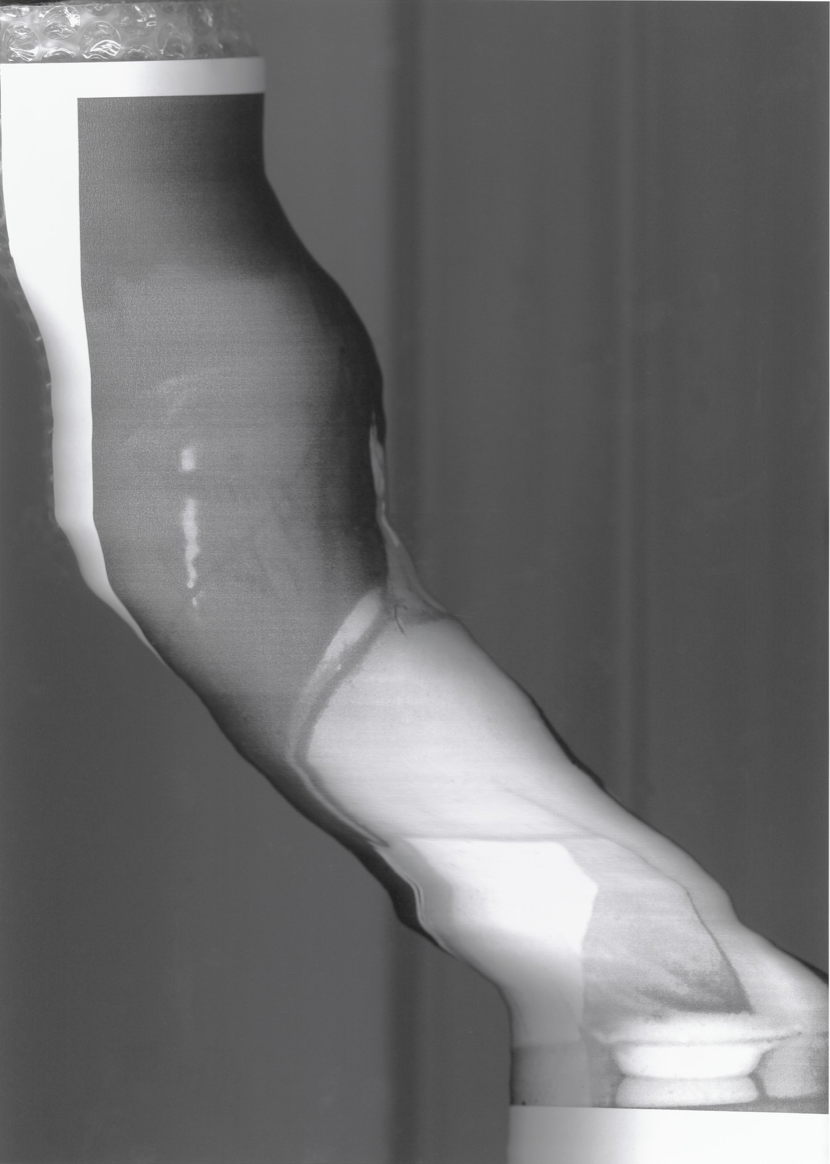
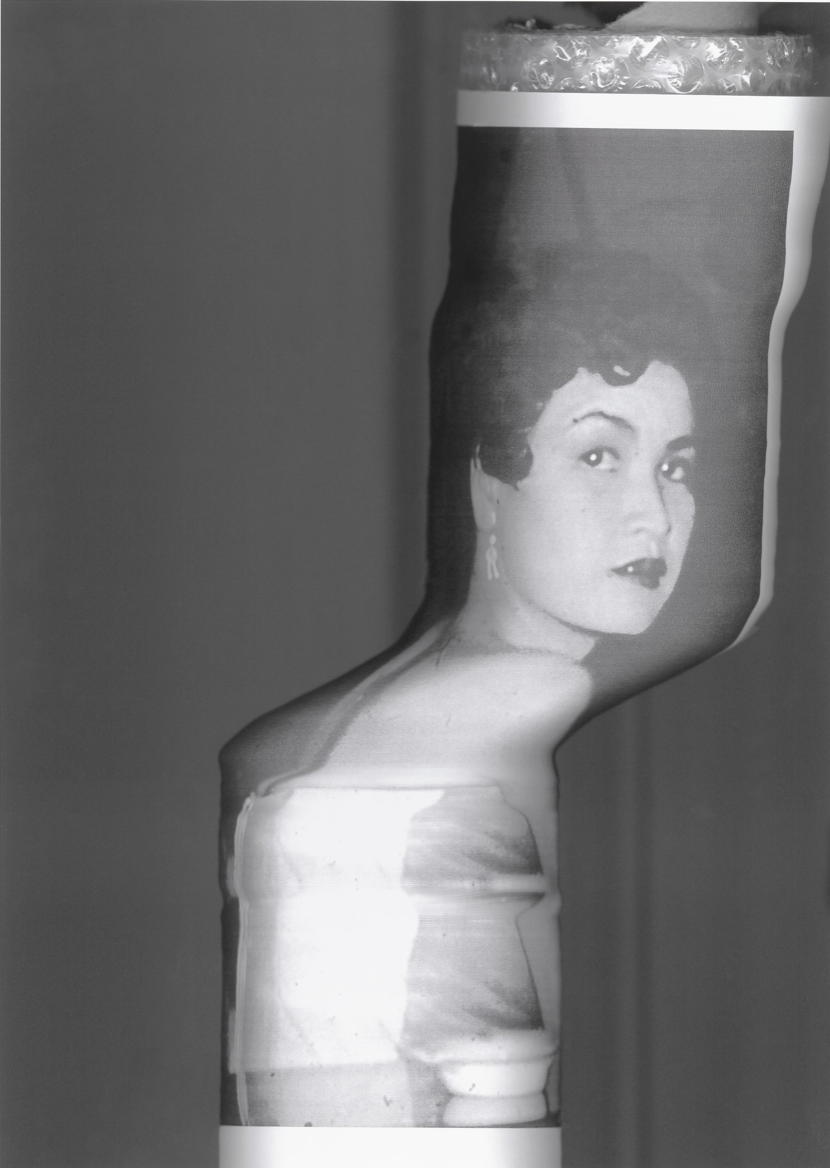

Untitled, 2008
Video, 6 minutes, looped
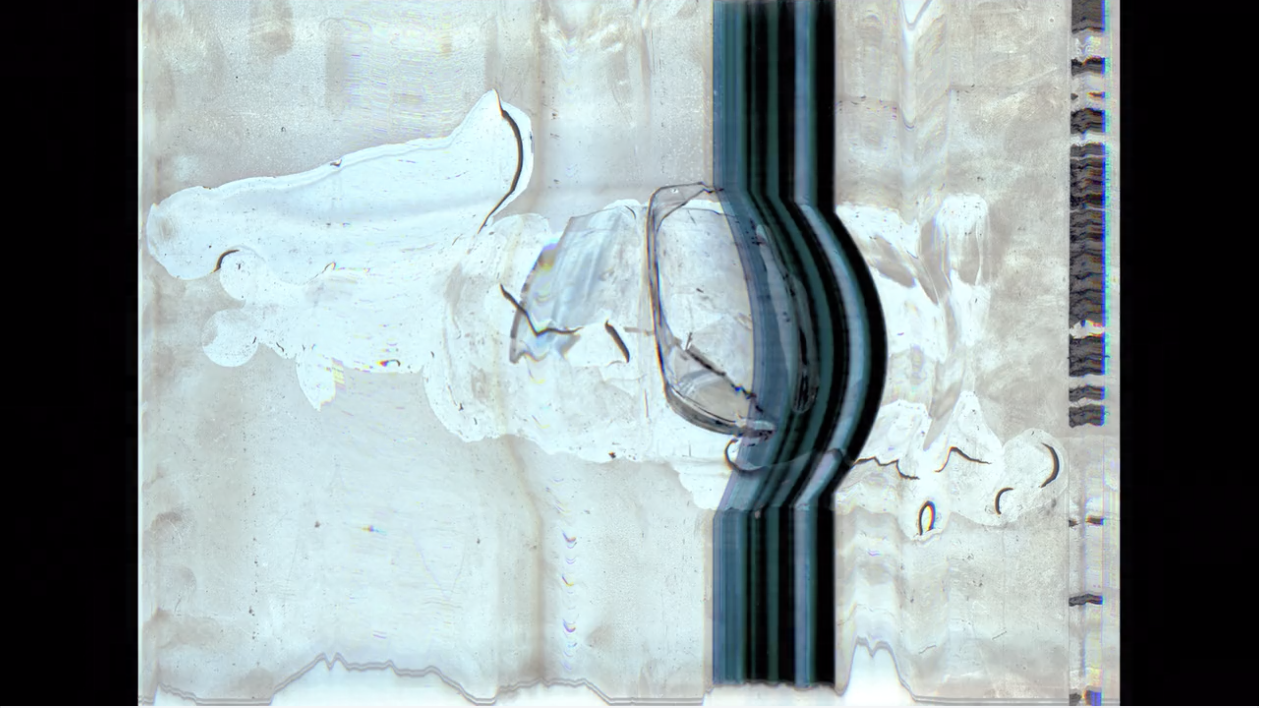
Hello, 2012

Untitled, 2015
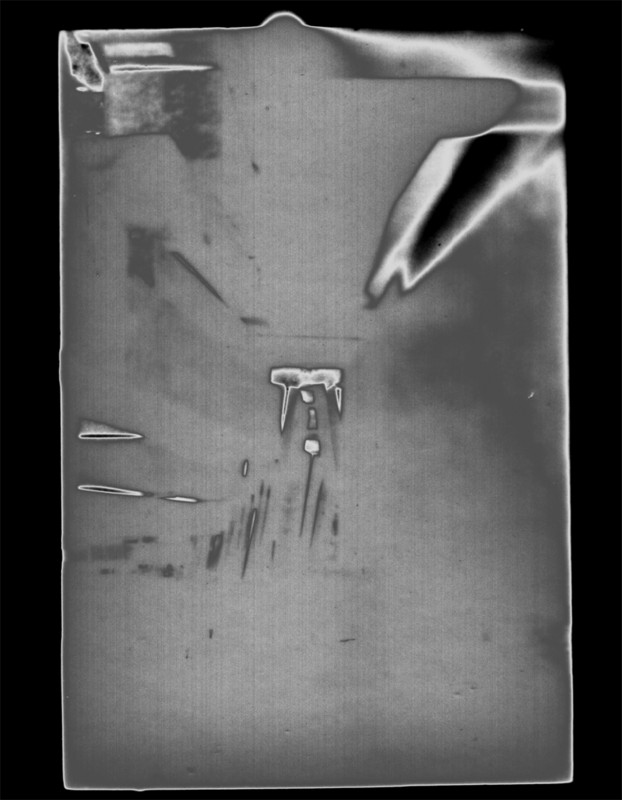
Untitled, 2007

Untitled, 2014
projection, dimensions variable


Untitled, 2019
‘Trisha Donnelly’s conspicuously untitled (and unexplained—there is no press release) work of installation art at the Shed is a lyrical op-ed about humanity’s inhumanity to nature. Into a capacious, dark gallery illuminated only by a little daylight coming in through vertical openings in one wall, Ms. Donnelly has brought the trunks of two large redwood trees and placed them atop the kind of padded, rolling platforms that furniture movers use. She’s also bandaged, as it were, the ends of their amputated limbs with cloth and twine. Across the room, the artist has placed a large number of similarly wounded, albeit smaller, sections of trees. (All the examples were already diseased and dying, and taken from private land.) Off to the side, separate from the mournful arboretum sits a black speaker that emits—at considerable volume—Leontyne Price singing “Habanera” from “Carmen.”
‘The effect is something like a World War I field hospital, minus the moaning and screaming. Each morning, in fact, someone from the Shed comes in and pours water on the two big trunks to keep them from drying out. On the floor, the spilled liquid looks not unlike blood in a black-and-white war movie.’
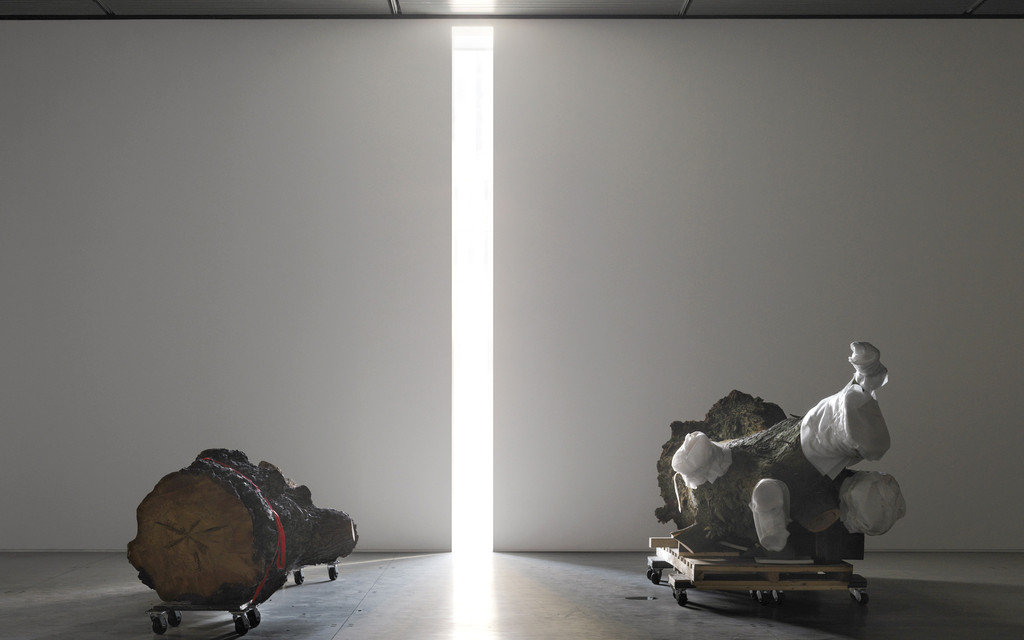
Untitled, 2002
‘In 2002, Trisha Donnelly created one of her best-known “events”. Arriving on horseback at the Casey Kaplan Gallery, dressed as a Napoleonic soldier, the artist announced that the Emperor had abdicated.’

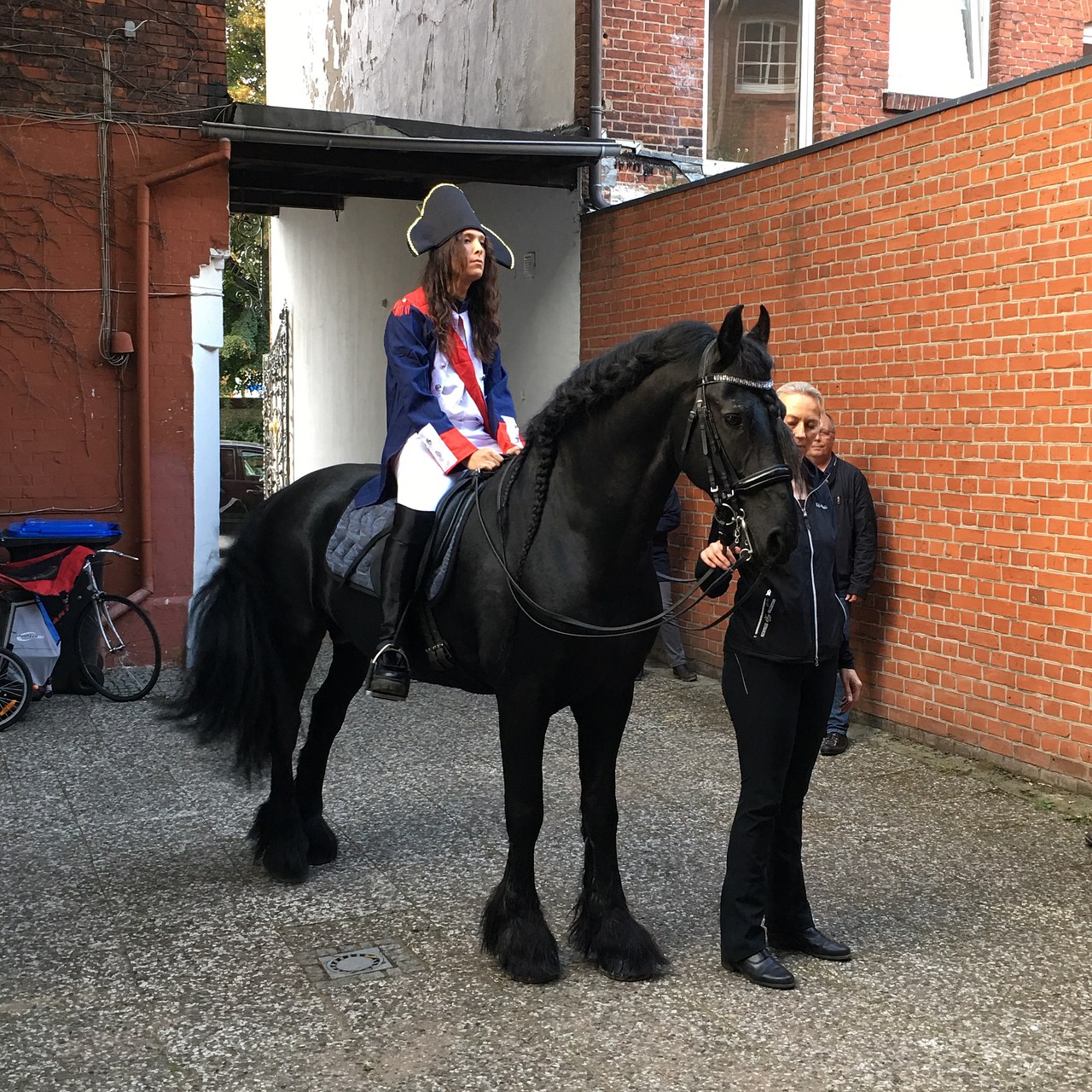
8 videos, 2012
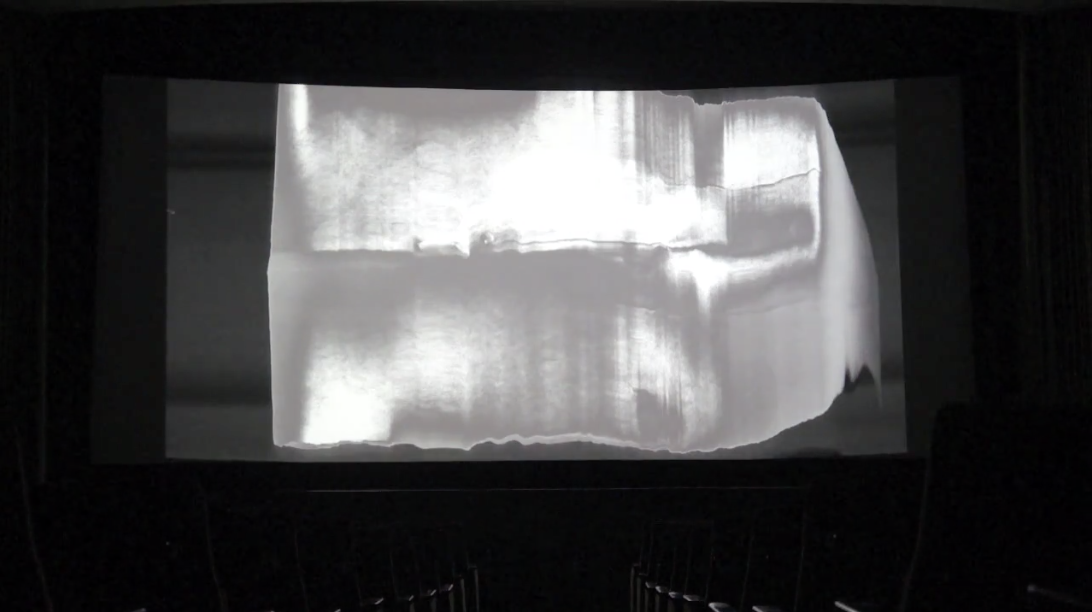
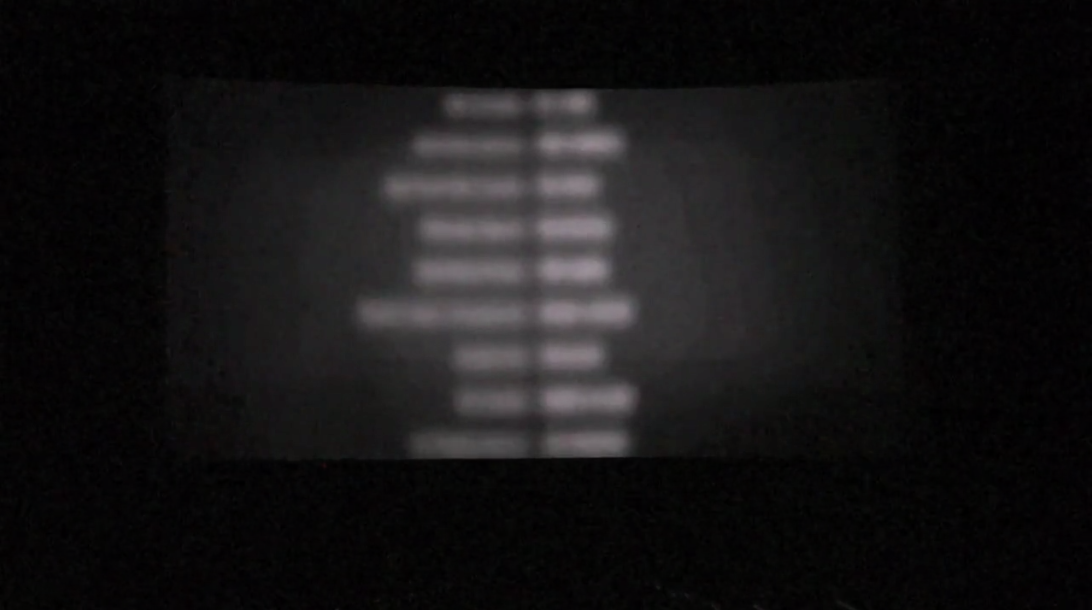


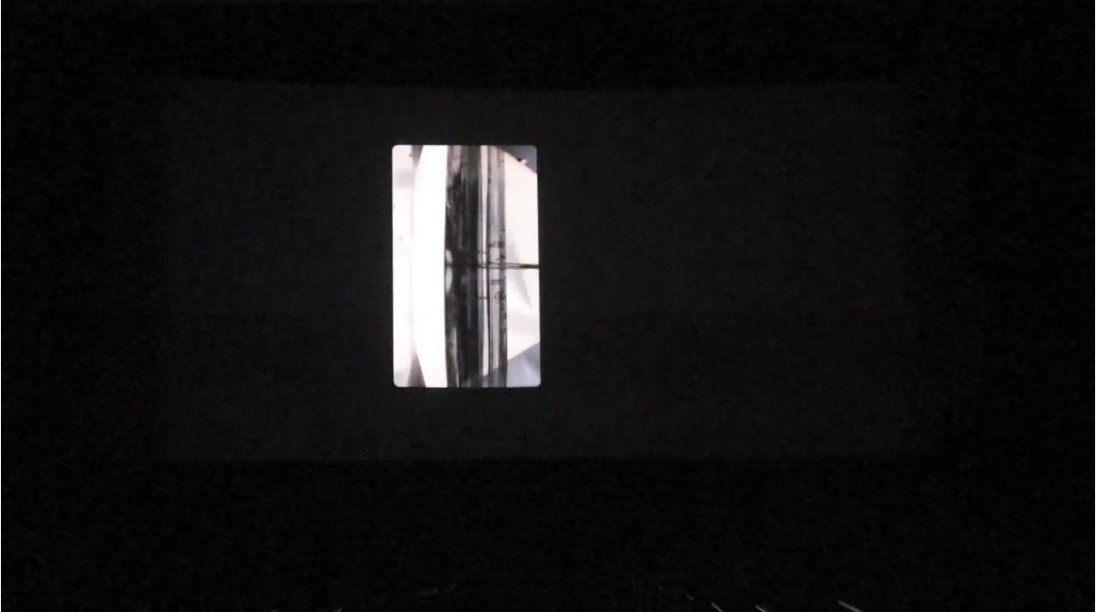
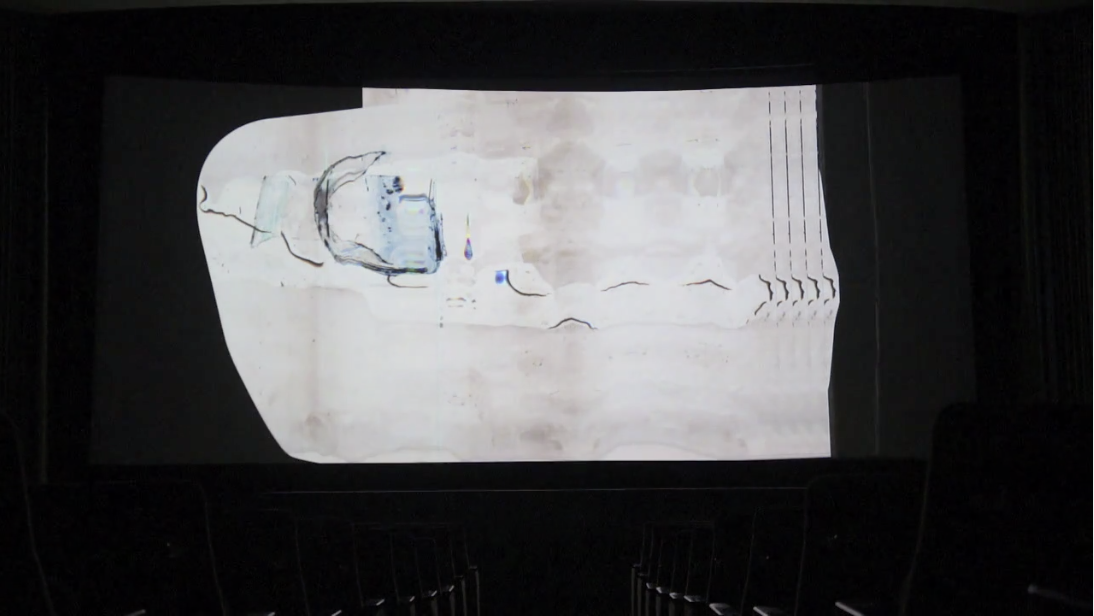
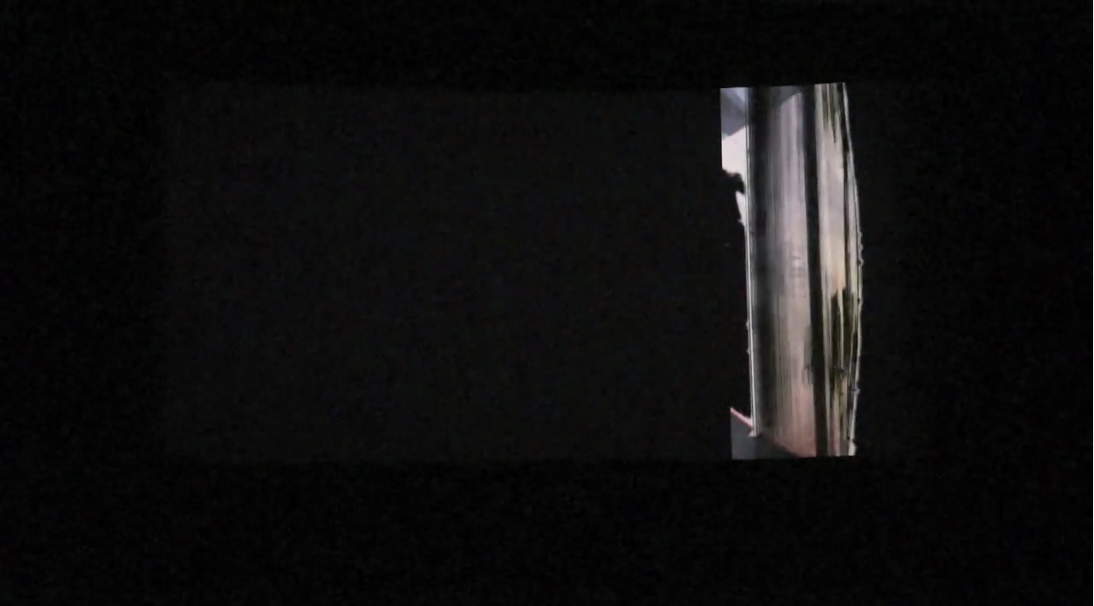
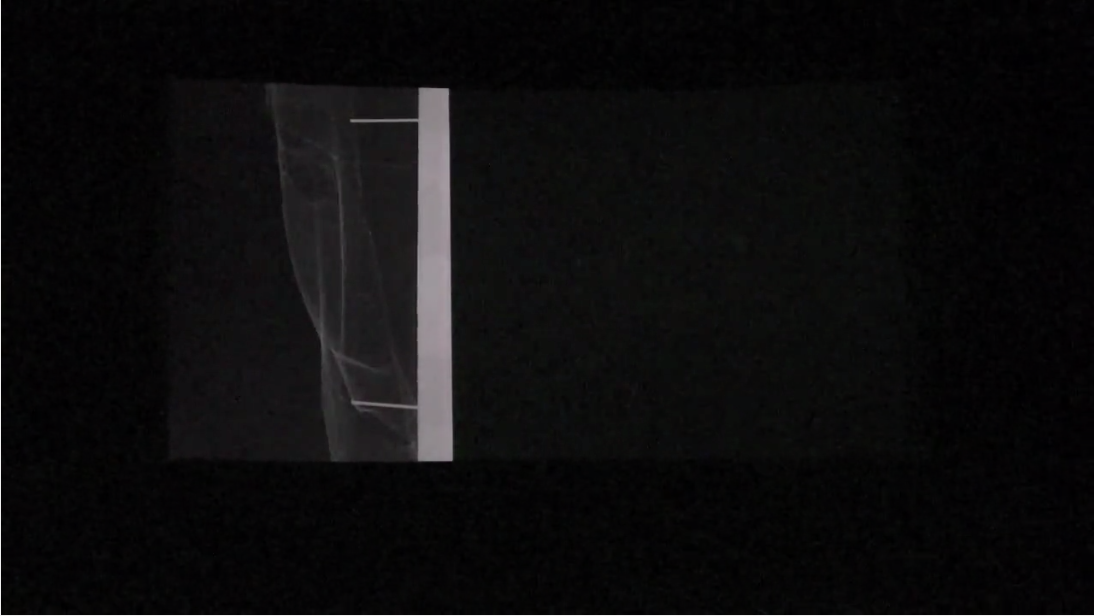
Untitled (Jumping), 1998-1999
‘In the silent video untitled (jumping) (1999), Donnelly reenacts what she contends are the signature gestures of specific rock musicians at the moment they achieve their “performance wall”—the point when they reach physical transcendence through their music. By jumping on an unseen trampoline, she floats in and out of the frame in slow motion, assuming a dreamlike state and re-creating the musicians’ adrenaline-induced moments of ecstasy. The identities of the different performers—from Ozzy Osbourne to Joey Ramone—are never revealed.’
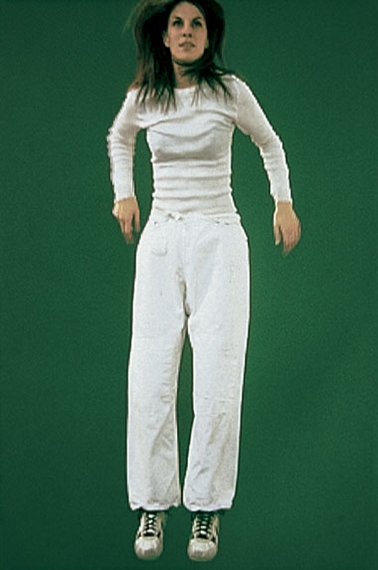
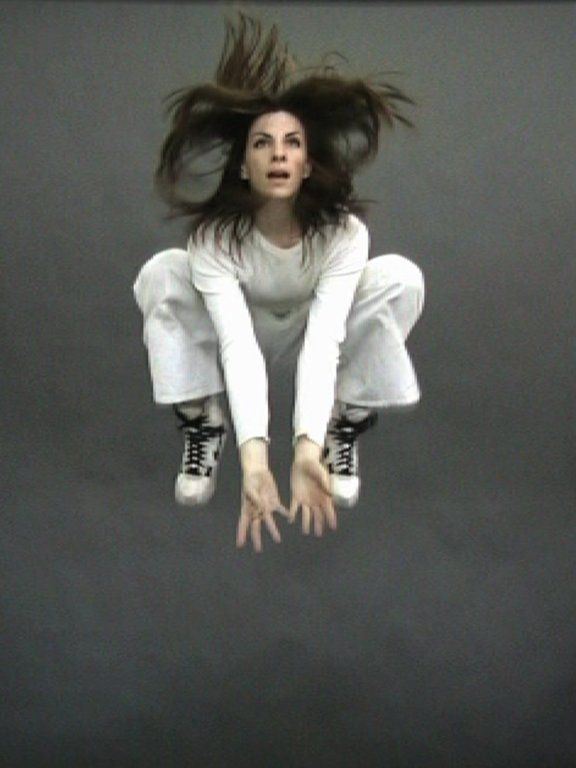
Various, 2017
‘Donnelly’s video works are often based on digital photographs, analog re-workings of their printouts and further layers of processing of the resulting materials. This inextricable fusion of source codes through the electronic sphere of digital processing is palpably present in another projection: a green texture flanked by two vertical red lines. A white beam crosses the image from top to bottom, a kind of light-scanner extracting all color and absorbing it into brightness once it comes into contact with a particular section. In light of Donnelly’s tactics, the realm of video art appears infinitely expansive. She makes explicit the function of photographs as the basis of film’s moving images only to twist this very foundation. It seems as if the presence of single takes is not hidden by adjusting their speed so that they appear as sequential movements. Instead, Donnelly alters their function, by not making many images move over progressing moments in time, but creating the impression of continuously stretching, folding and morphing a single image across the screen into infinite shapes. This process creates a sensation of walking deeper into layers of time, rather than following its chronological passing. The effect of video appearing not through moving images but as moving image is aided by the way Donnelly cuts through the habits of projection and positions her works vertically. Movement enters the scene as the transformation of perceptional habits vis-à-vis the alternate arrangements and material energies manifesting themselves in these theatrical spaces.
‘The third seemingly inconspicuous, small projection emanating from the base of the video projector is where the show becomes uncannily sublime. Here, a set of rings (perhaps from a binder) meet a bright white field. Staring at the projection for too long hurts the eyes – yet every time I moved my head to look away, bright colors appeared in the corner of my eye. Staring into the light as long as possible to determine whether I simply missed a frame in the projection was pointless. And there I found myself in the midst of Spiritism, trying to use technology to capture the invisible. When photographing the screen, the pattern revealed itself again: crisscrossing pillars much like on test cards used in television and screen calibration to probe the spectrum of visible colors. “Spectrum” designates electromagnetic emissions including light or a complete subset of colors. Its etymological kin “spectre” however is an even better frame for describing what emanates from Donnelly’s work: an optical illusion or – a ghostly presence. This is one that activates the senses including the infamous sixth one.’

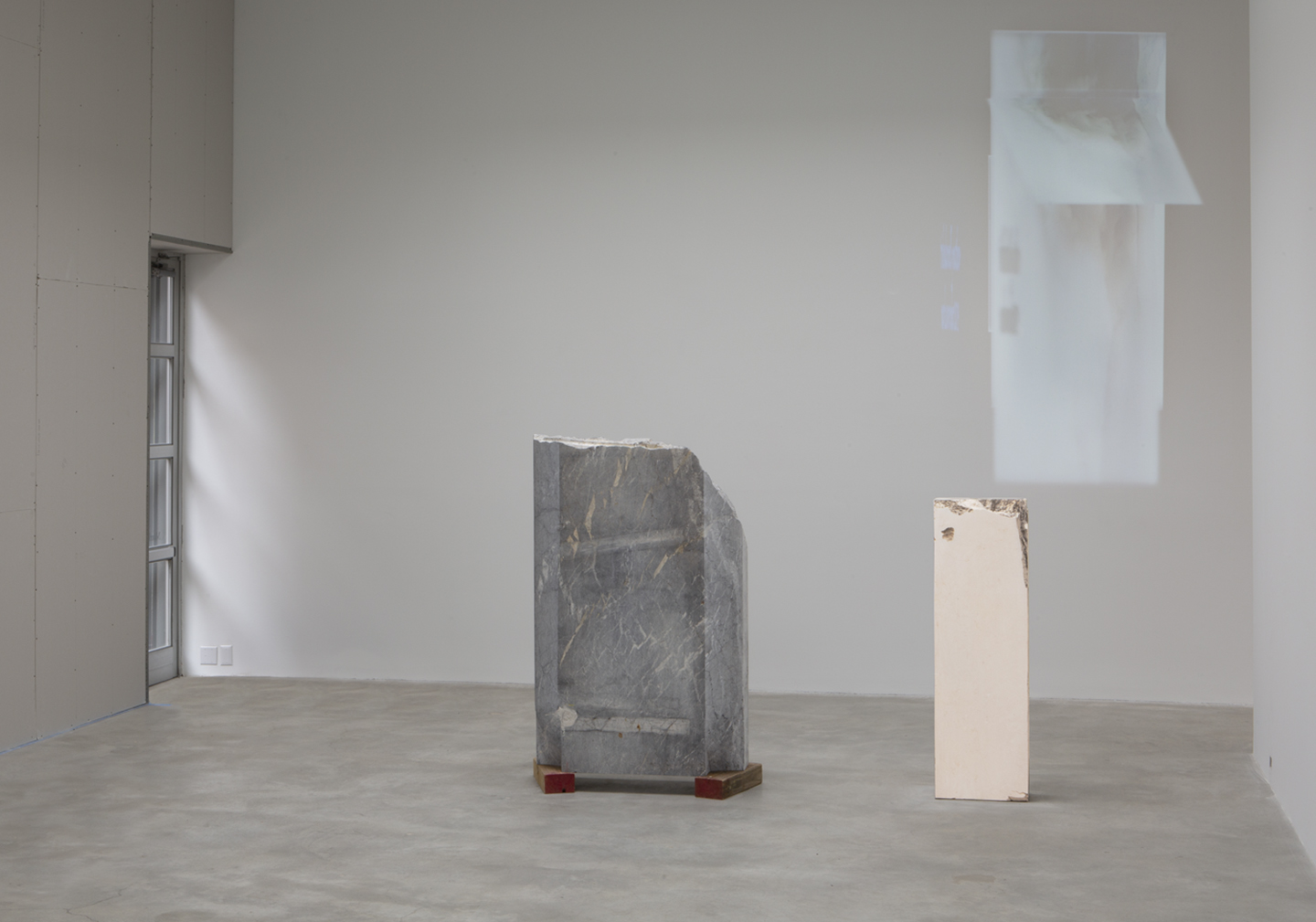
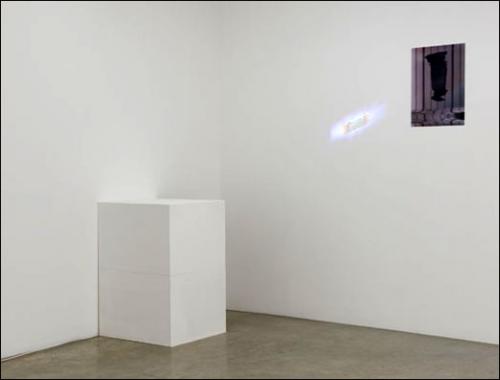
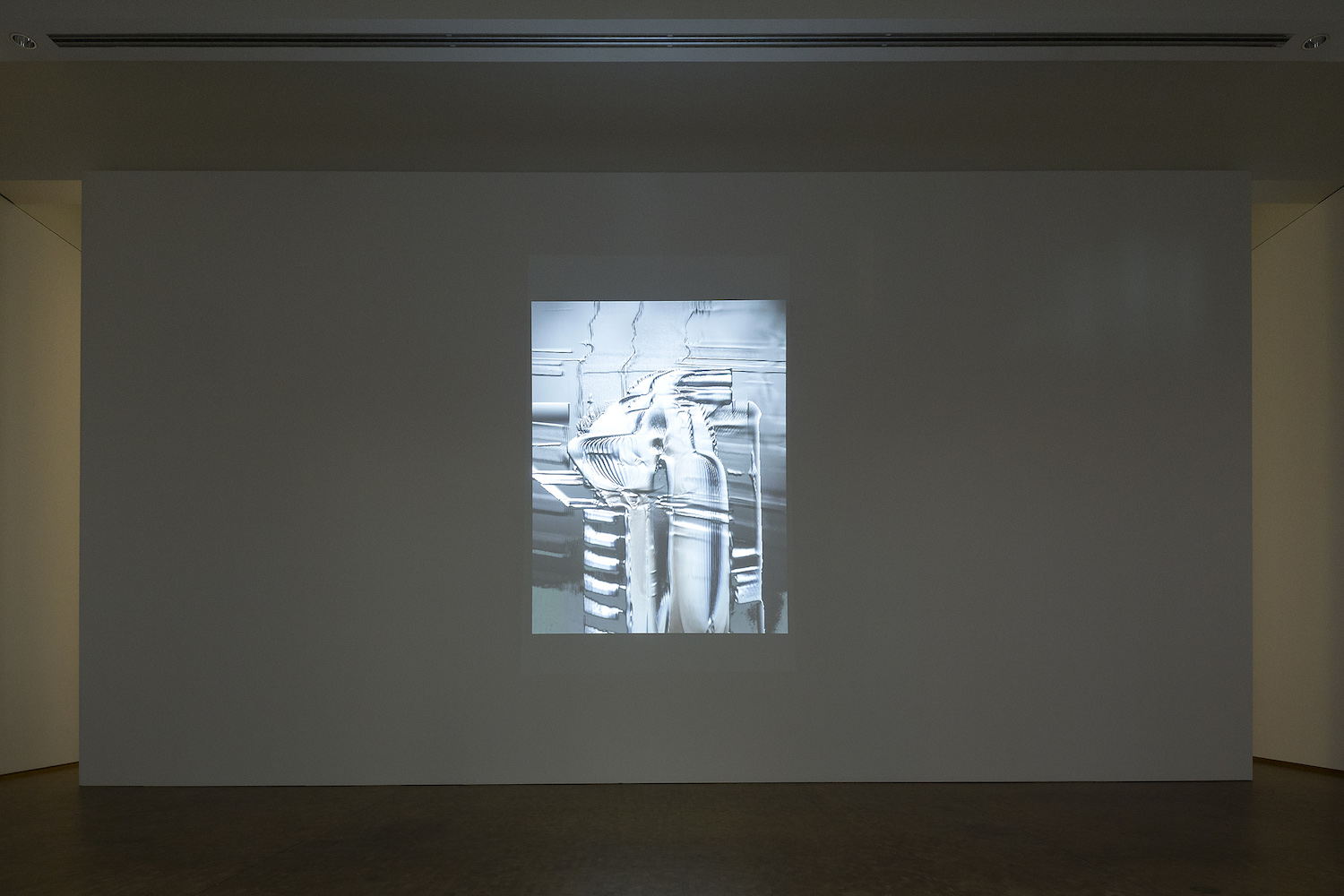
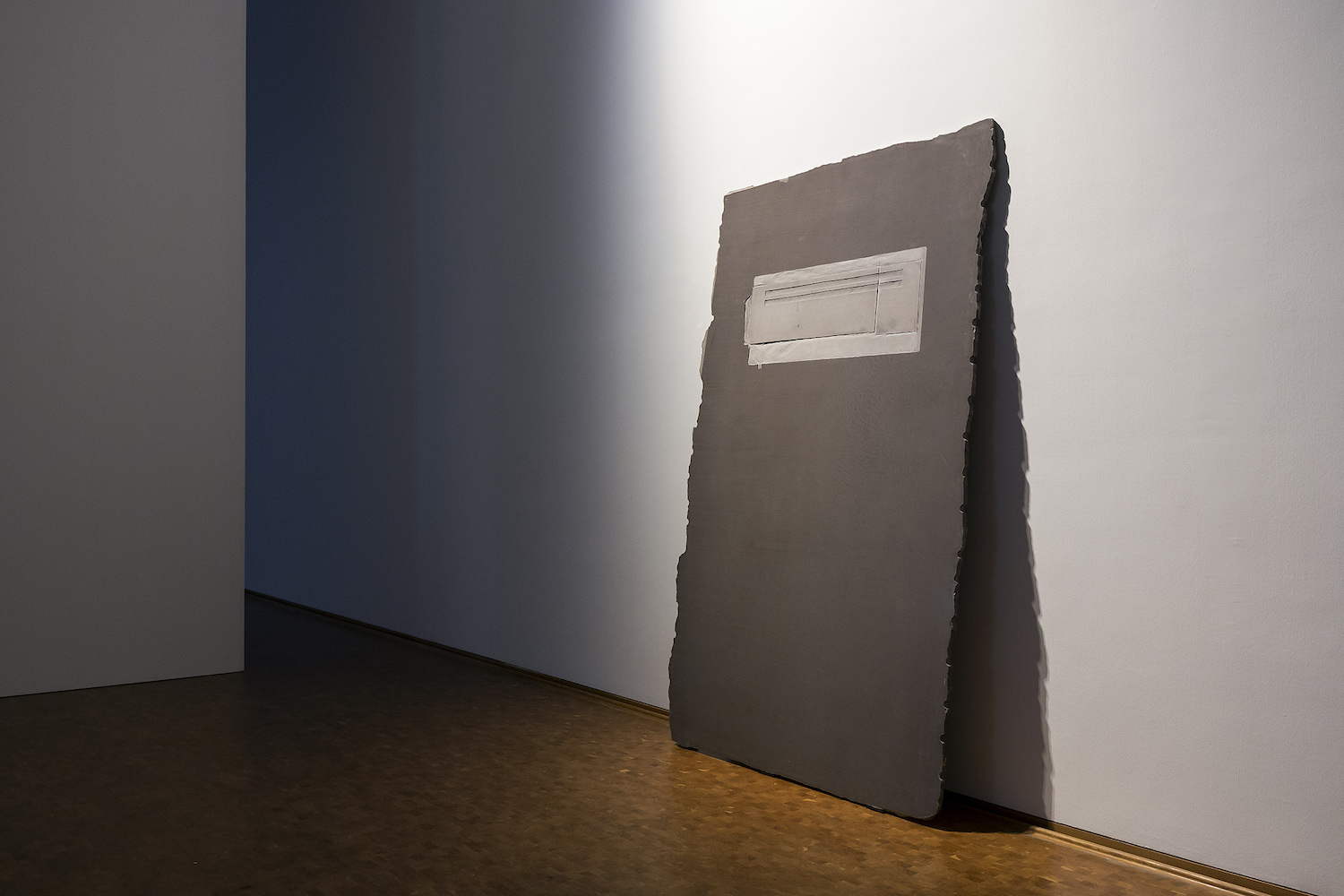
The Dashiell Delay, 2006
‘Akin to her site-specific practice, Donnelly here involves the collector in the process of art production and reception. She conceives an edition subscription, where a total of 10 installments are made and delivered regularly over the period of one year. Consisting of four Xeroxes, three gelatin silver prints, one line-block, one felt-tip pen drawing, and marble slab, this edition makes for twelve months of mystery: ten unpredictable messages that will (or will not) be decoded in the record left behind.’
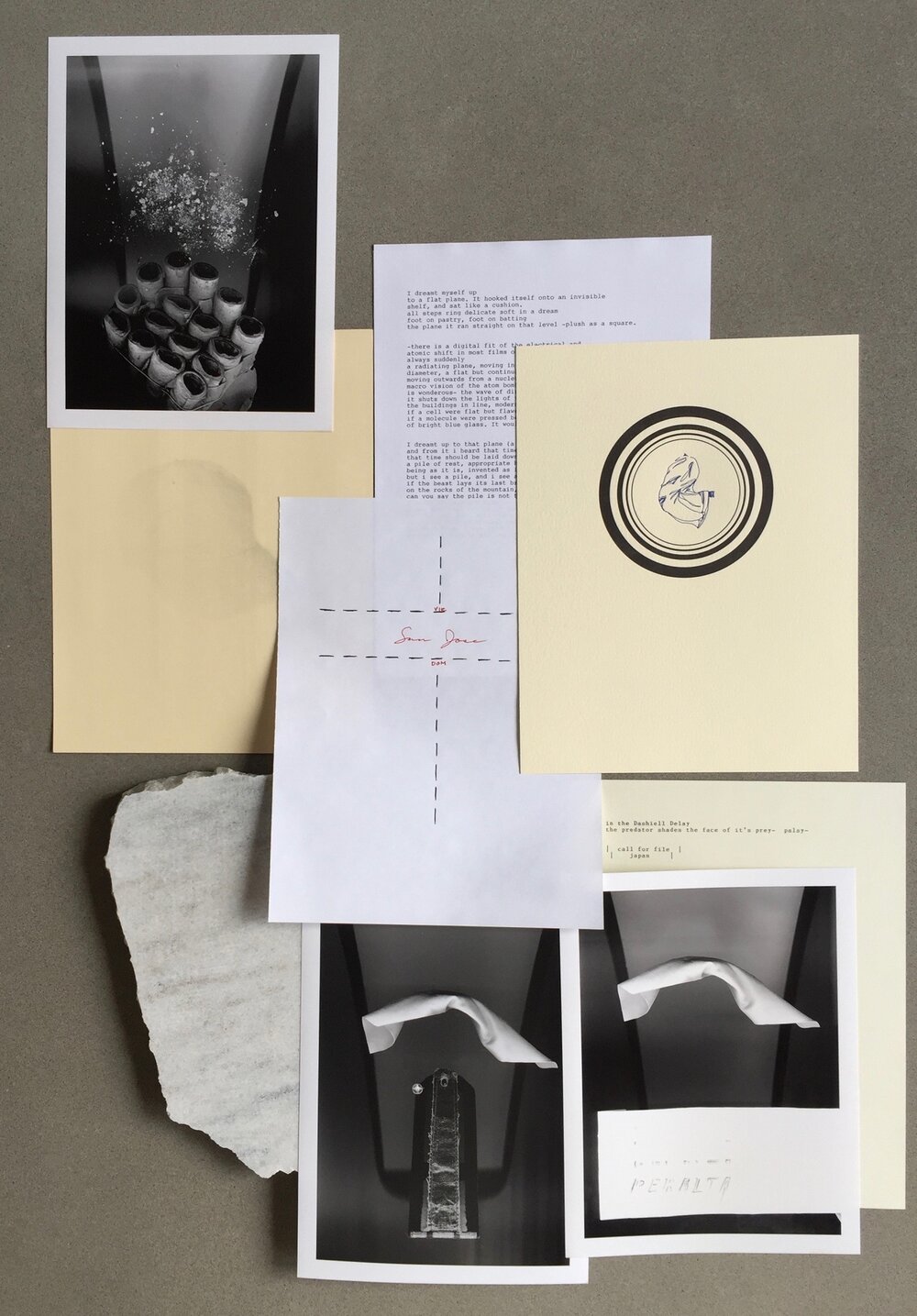
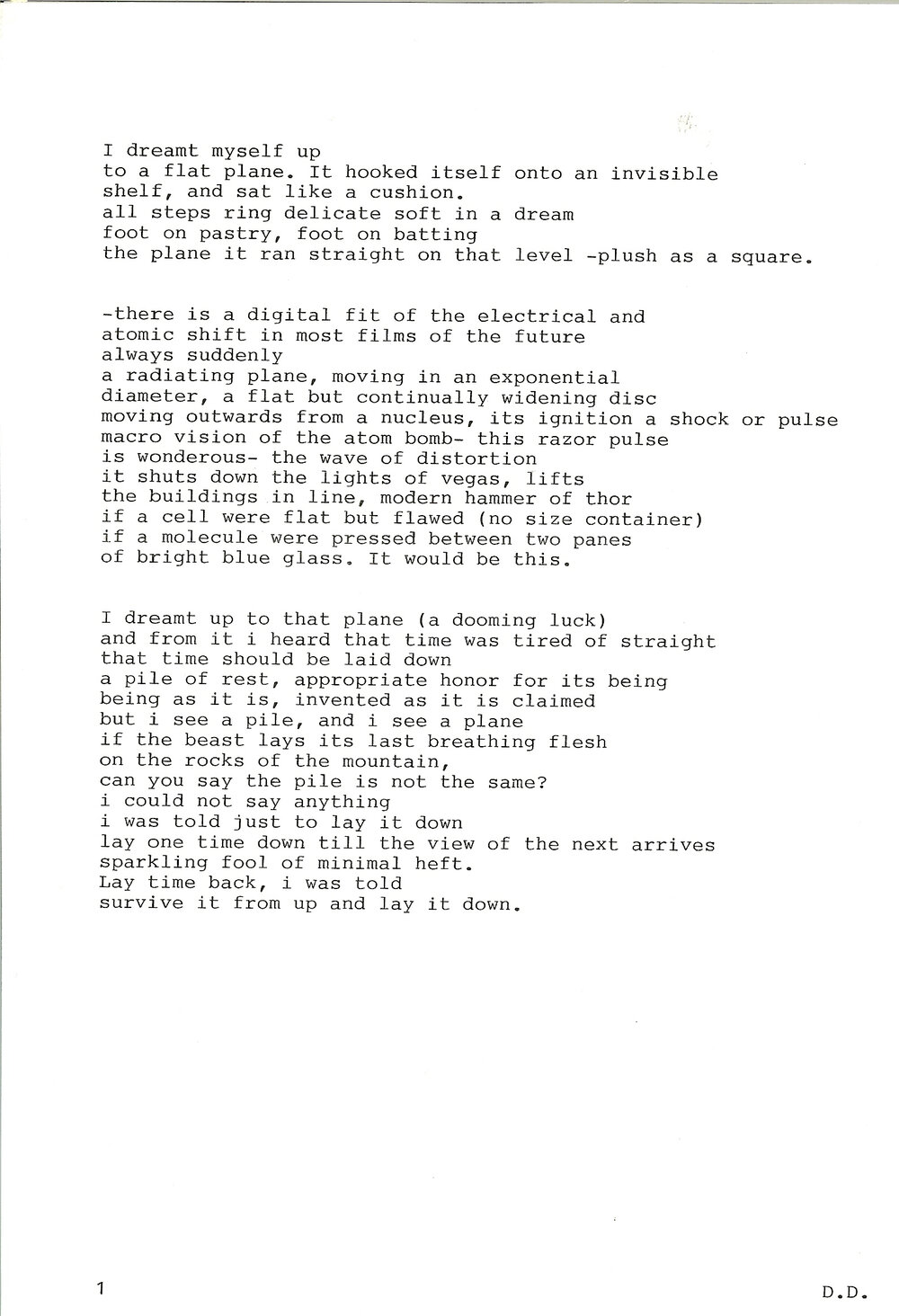
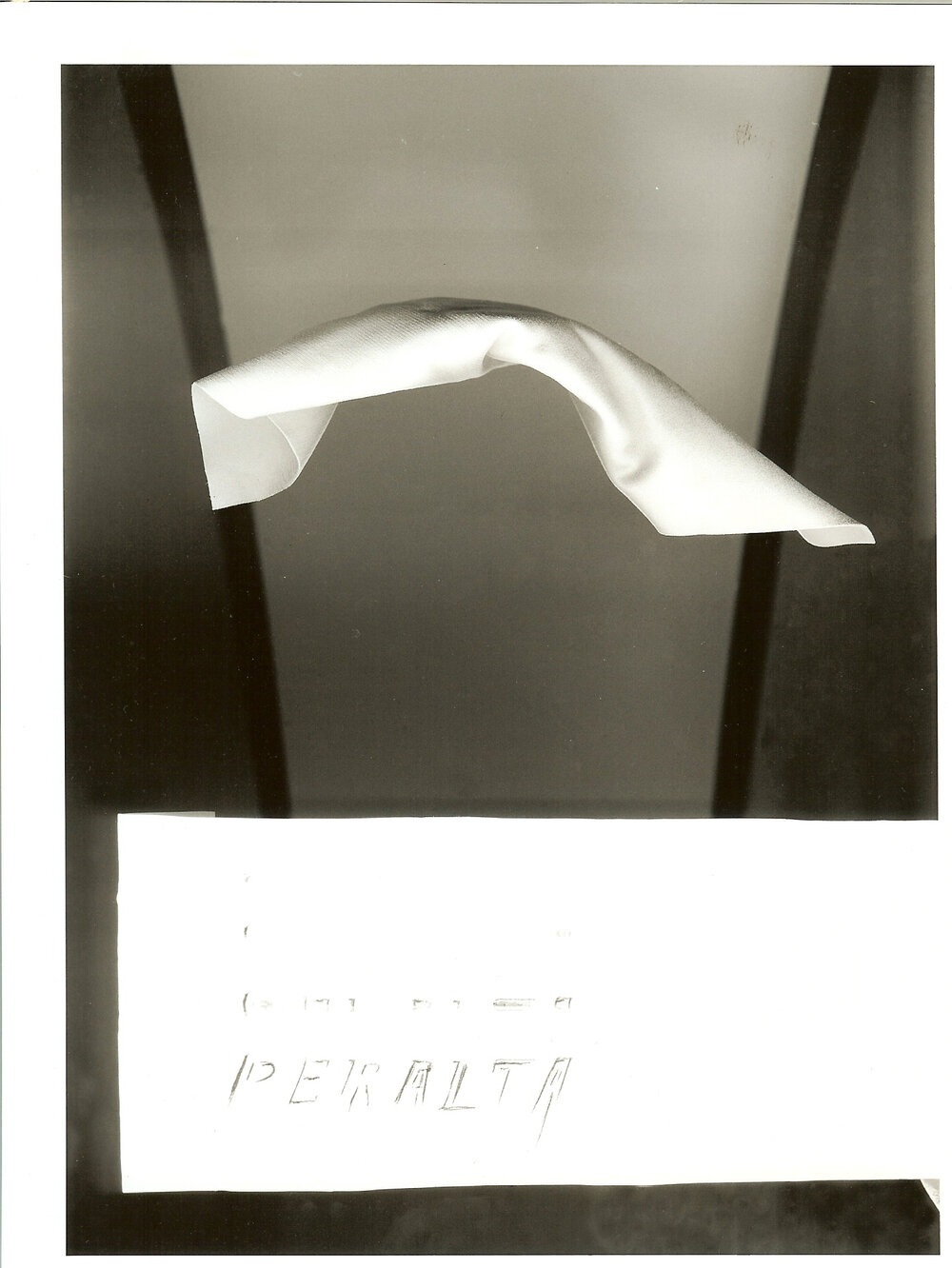

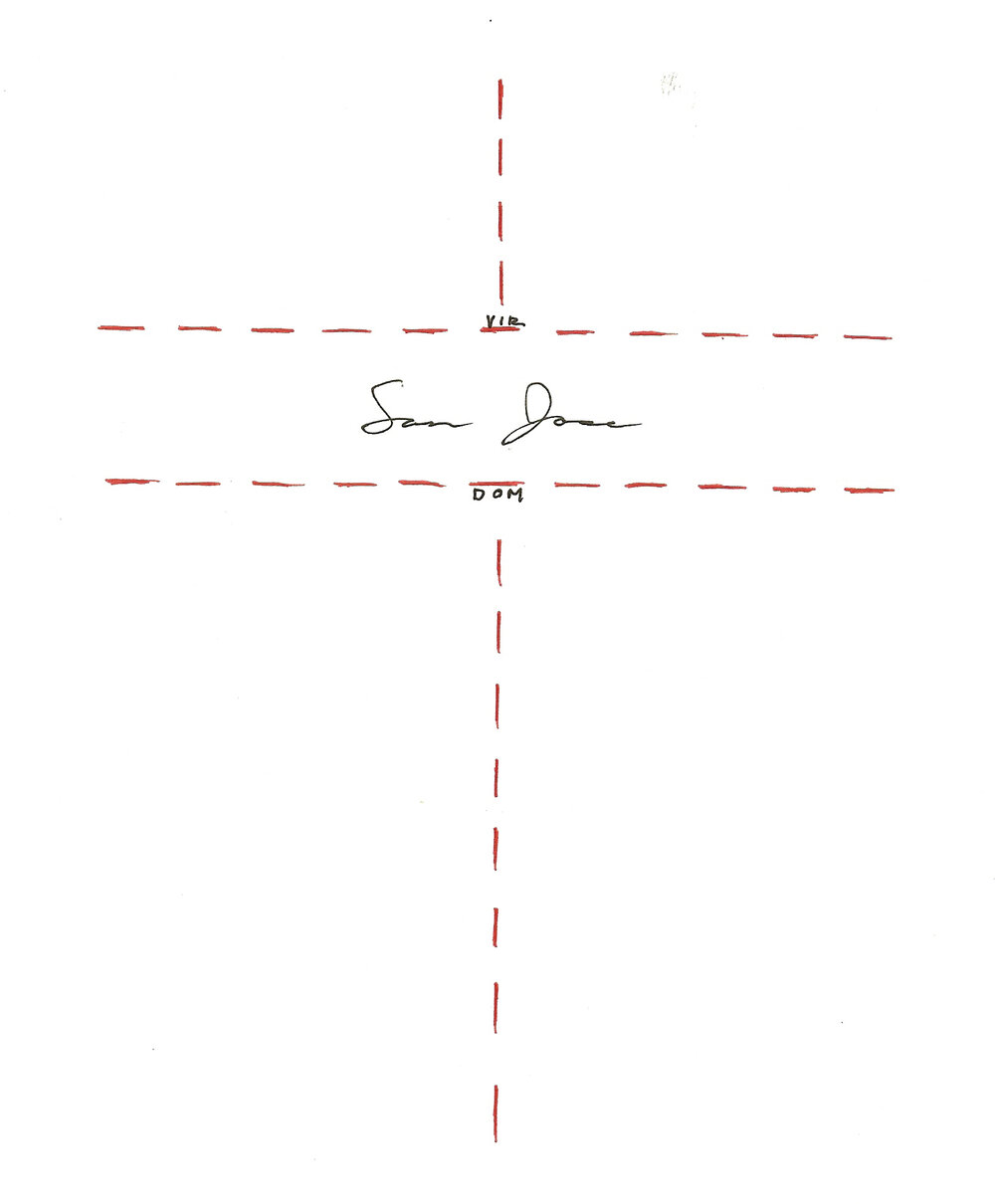
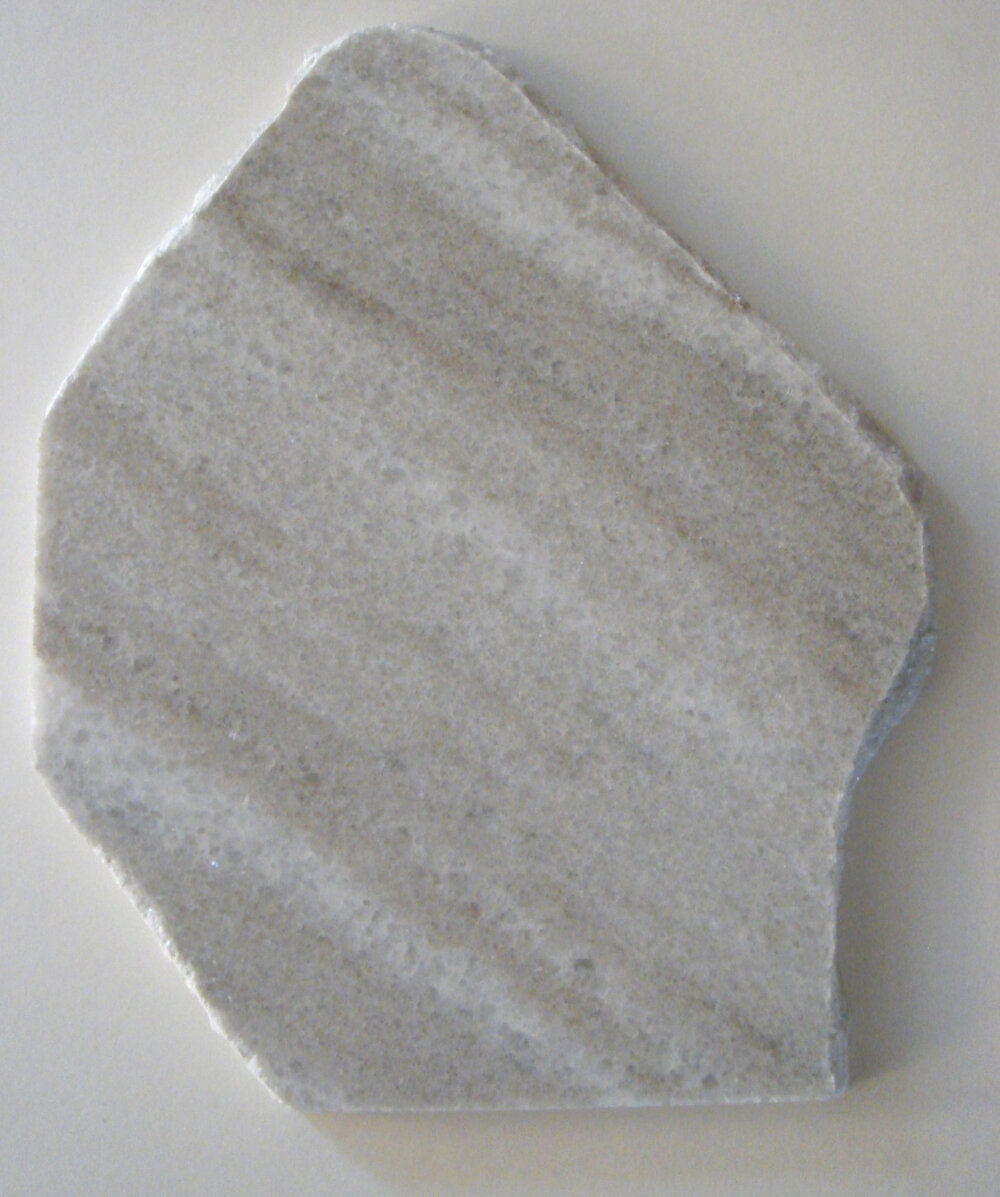
Let ’em, 2005
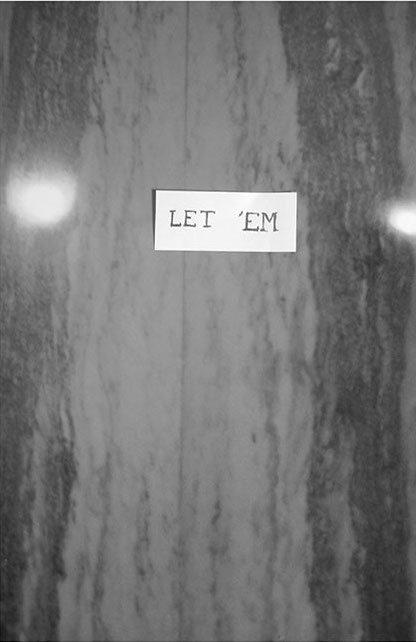
Untitled, 2010
Travertine, 61.3 x 32 x 7.3″ x 155.6 x 81.3 x 18.5 cm
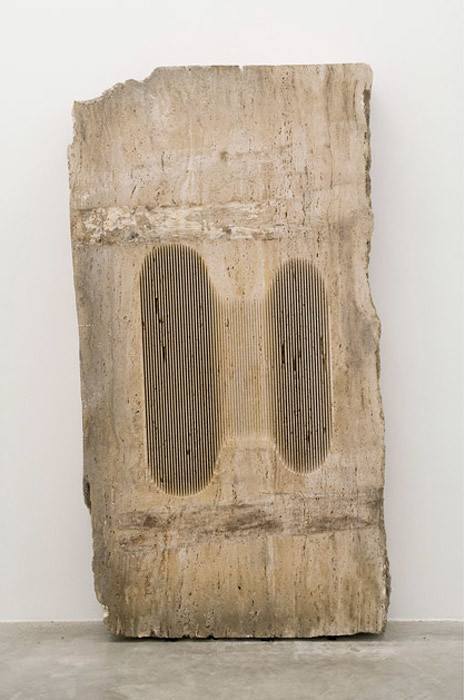
Untitled, 2012
‘Commandeering a high floor, Donnelly presented a suspended sculpture, a big, steel-framed, partly cracked tray held up with aeroplane cables, like a perpetual enigmatic experiment. I remember low lighting, I remember the variable tilting of the oblique tray and water in it, but mostly I remember that characteristic quality of insistent wordless proposition: disbelief suspended, the author as artist erased and replaced, prospectively, with someone or something arcane and anxiety-making, and then the figure of Donnelly, manipulating the murky theatrics, returning to mind.’
Untitled, 2018
pencil and print on color paper
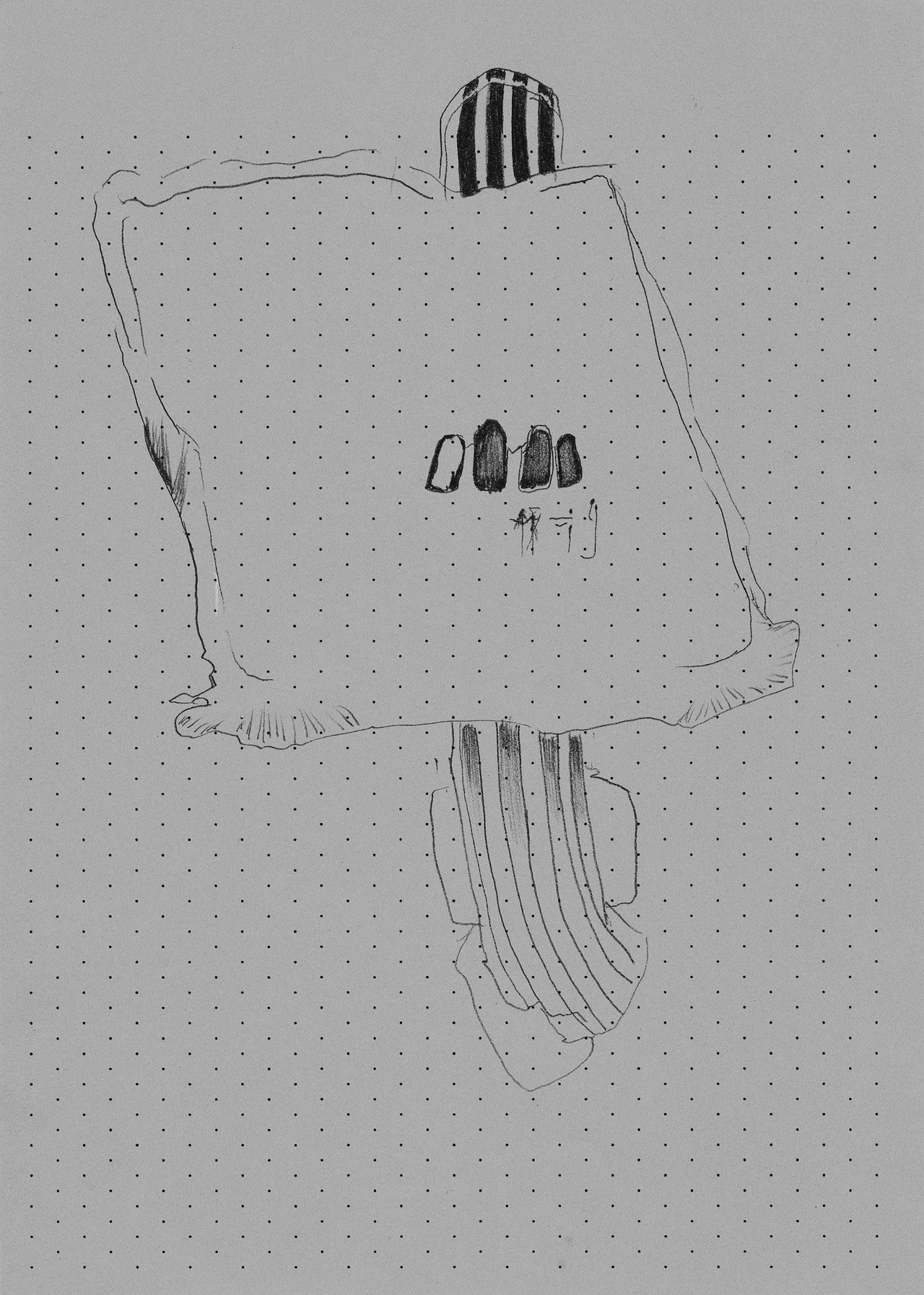
Untitled, 2010
video projection and rc-print, 3.19 minutes looped
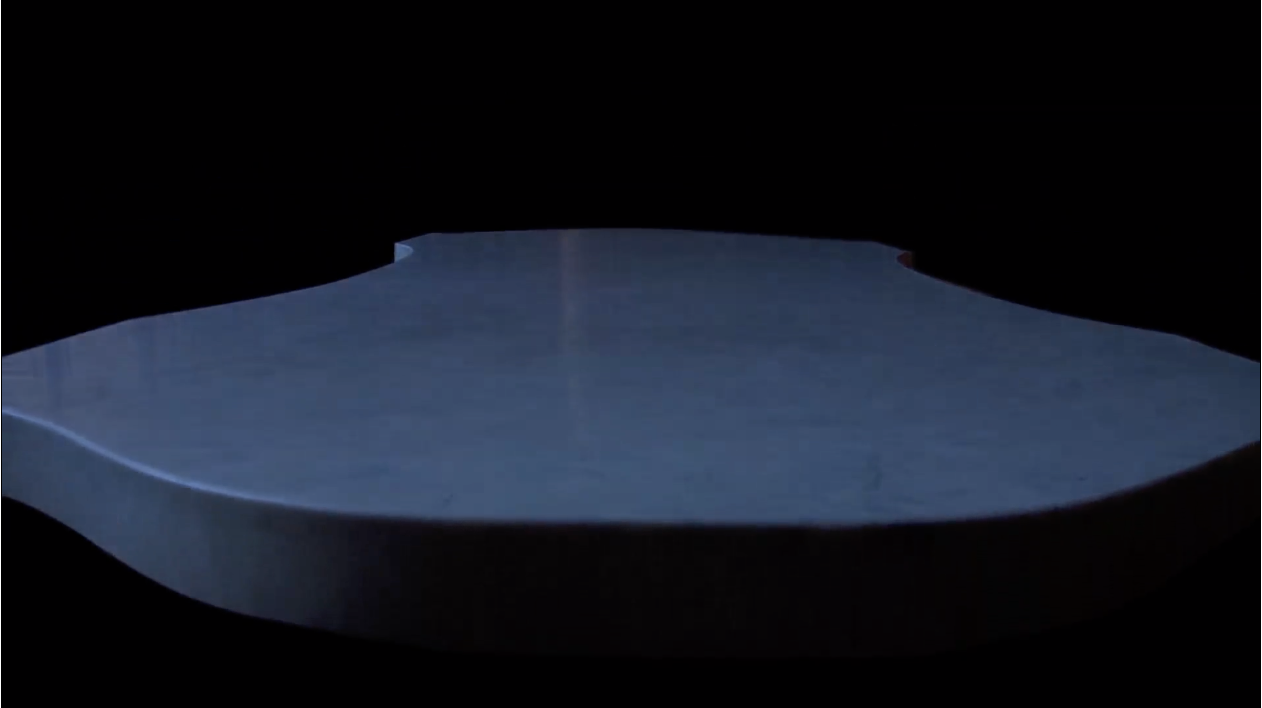
*
p.s. Hey. ** Zak Ferguson, Hi, Zak. Interesting. I just kind of blank out and scribble, which results in my signature rarely looking the same, which results in trouble on those rare occasions when some place wants to check my signature by comparing it to the ‘official’ one on my passport, which I had also scribbled unthinkingly. ** Ian, Hi, Ian. Very nice about your weekend. Writing and friends, what else is there? Well, a few other things, I guess. Right, hockey is big in Canada. I remember visiting some hardcore punk rock friends in Toronto in the 70s and being startled that they were obsessively into hockey. Kind of the same here with soccer/football. The most unlikely (to me) people are way into it. High hopes that your interview goes swimmingly. Oh, uh, the pistache escargot was from what is often considered to be the greatest bakery in Paris, Du Pain et des Idées, and, no, it’s all pastry, and it looked like this, and tasted like, well, god. You take care likewise, bud. ** Misanthrope, Nice about your mom’s possession of ‘The King’s’ signature. I know you Wines people think he’s The King with no quotation marks. ** _Black_Acrylic, Funny to think of you as a Lemonheads fan given your current tastes. But then I liked them too, which odd to think about. Dude, The Wire! That’s my Bible! That is a serious score and honor if you ask me. Excellent! ** Dominik, Hi!!! A writing frenzy … those are such nice words. I want one of those. Great! The escargot pistache at that bakery is sublime. The edges are great, but then when you get into the center it’s so moist and sweet, your mouth explodes in the good way. I’ll take you there when you visit here. Okay, that customer does sound like an annoyingly colorful character. Oh, wow, I guess you could open other dimensions of the universe. That certainly makes that key a must-have. Gosh, I don’t know what I’d choose, there are so many options. Seemingly it’s a forever usable key so you wouldn’t even have to pick a single mystery to solve. Ha ha, thank you. ‘Thigh gap’: I like that term. I’ve never heard it before. Love like the look on this kid’s face, G. ** T, Hi, T. Yeah, I think I was one of the kids who filled a notebook with signature tryouts. I don’t know why gave up just decided to just scribble whatever blind. I.e., me too. Mm, gosh, no, I don’t think I had a favorite, did I? Hold on. I think I was paying more attention to what the signature was on. So I like how … spoiler alert … Daniel Radcliffe signed that woman’s asthma inhaler, for instance. Oh, Créteil. I was there once. It seemed okay. It’s very Catholic. It’s an easy, doable distance from central Paris. That could be all right. I guess you would come check it out before you said yes? Fascinating little history on synthetic mint. Thank you doing that. Hm, I like eating it. I like chocolate/fake mint candies like Junior Mints and ‘after dinner’ mints. And fake mint ice cream. Once I went to a spa that had this steam room where they pumped artificial mint into the steam, and that was fucking intense. Minty shaving cream isn’t too shabby. So, I guess I’m rather indiscriminate about it, I guess. Well, thanks to you, I’m going to pop down to the local market and pick up some kind of mint edible, so that should be enough to make Wednesday tower over what it would have been. I hope something that comes into your proximity today exudes sensory overload, although not the point that you accidentally walking into the path of an oncoming car or anything of course. ** Derek McCormack, Mighty Derek! So happy you were …happified? My signature is bleah incarnate too. Poor us. Love, me. ** jamie, Salut, Jamie! If you hit the link up in my comment to Dominick, you’ll see the very thing I ate. But unfortunately not imbibe its minor genius. I went through a short period as a kid of being an autograph hound, yes. I had a little autograph book I carried with me everywhere, and, because I grew up in LA, one did happen upon stars sometimes at, like, the supermarket or the airport or whatever. The only autographs I remember getting for my book were, mm, Lucille Ball, the actress who played Granny on ‘The Beverly Hillbillies’, Mickey Dolenz of The Monkees, the actor who played Artemis Gordon on ‘The Wild Wild West’, two members of The Zombies but I don’t remember which ones, George Carlin, … I forget the rest. I think I might still have that autograph book somewhere, but I don’t know where. Cool that you did that cartoon voiceover. I want to hear you kvetch Scottishly. Now I’m curious about that ‘lifestyle liaison zone’. Oh well. Brigitte Fontaine is incredible! And she’s ancient, so it’ll be a lucky break to catch her while she’s still public. Have a lekker, lekker Wednesday! ** Bill, Hi, B. Well, … perhaps he did? I forgot that I blurbed Joel Lane’s book. Right. He was a goody, right? Need to reread. Thanks, pal. ** Steve Erickson, I think I write in a sort of mishmash of cursive and block print or whatever they call it. Speed over clarity. I’ll see if I can catch that Onion City stream, thank you. Lizzie Borden! Very cool! That should be highly interesting. ** Kyler, Hi, pal. Good to see you! It’s been a while. Cool, I’ll go watch you do the media! Everyone, Writer and knower of the unknown and d.l. Kyler was on ABC Eyewitness News during a segment about the curfew controversy. Go look at him and hear him talk here. Happy springtime, sir. ** Paul Curran, Mm, maybe it’ll make a big vinyl-like comeback. Wouldn’t surprise me? Sneaky side-project novel? Whoa! Please do. So you can bang it out when you need to? That would be very great, speaking for your legion of Curranites. Oh, the theme of my blog is Hemingway. I don’t know what else. I’m regularly restoring posts from my old Blogger to this WordPress blog, and there aren’t a lot of problems. Certain code things are different, but they’re pretty easy to correct, so, presumably, you could just send the post in Blogger mode, and it should transfer without too many problems? I’m sure we can sort it out and make the matches when you’re ready. I don’t think it will be too problematic, like I said. Happy day to you, Paul! ** Kyle Hildreth, Hi, Kyle. Unfortunately, I am not that Dennis Cooper. We just share a name and a proclivity to make films. I don’t know him at all, so I can’t direct you to him. My apologies, and best of luck. ** Brian, Hi, Brian. Yes, when I was younger I learned handwriting analysis for fun, and the more illegible the signature, the more telling it is, at least based on my memory of how that stuff works. You’re Anger deflowered! My favorite is ‘Inauguration of the Pleasure Dome’. I will warn you that he started making films again after a huge break in the early 00s, and they are really dumb and terrible films, so I would stick to the great 40s – 70s work. Oh, yeah, ‘Lilies’. I’m not surprised if that one doesn’t hold up. If it did even then. I’m a real fan of ‘Effi Briest’. Curious to hear what you think. I salute you as well on this potentially fine Wednesday morning. Have fun. ** Right. Trisha Donnelly’s work is not very suited for display in the very limited blog format, but she’s one of my favorite contemporary artists, so I decided to give it a shot, and I think maybe her wonderfulness is accessible to a sufficient degree even in such an unconducive realm as this one. But that’s your call. See you tomorrow.




 Now available in North America
Now available in North America 
Hi!!
Okay, now I really need to visit Paris. Not JUST for the escargot pistache, but it’s more than tempting. It’s a deal. Thank you.
Yeah, I’m pretty sure I could come up with tons of other things I’d love to open with that key. I’ll lend it to you whenever you find something uncomfortably locked.
I had a phase in high school when I starved myself pretty severely, and I became painfully familiar with the terms “thigh gap” and “thinspiration” and the rest then.
Hahaha, oh no. Poor kid! I’d always had the idea that if I got really scared, I would go into attack mode, but my brother scared me like this once, and I just moved my hands like a deranged chipmunk in complete silence, so… I’m not so sure now, haha. Love sending you an intense wave of writing frenzy when you desire it the most, Od.
Dennis do you remember Jill Johnston and her “Dance” Journall in the Village voice? It started out as aweekly revue of dance performances arund town then turned into a free-form account of whatever came to her feverish mind. For some reason Trisha Donnelley made me think of Jill.
Dennis, Some more good art today.
Hahaha, we do. I’ll admit it, I’m guilty of it too. But I do take the piss out of The King a lot. Can’t help it. At the end of the day, we’re all just guys and gals, with all our fears, hopes, dreams, insecurities, etc.
Shit, I want to listen to “(Marie’s the Name) His Latest Flame” now! My fave. Moz did a good cover of it that’s online. Well, it was when he was with the Smiths and he’d start one of their songs with that. (He also did a good live cover of Suede’s “My Insatiable One.”)
Still grinding on Between Two Worlds. I’m glad I’m doing this. 1. Good to be working on something. 2. Good to be working on THIS again finally.
I’d not heard of Trisha Donnelly before today but I do like her work, even when seeing it here within this imperfect realm. The blog has made a good job of it! Untitled (Jumping) would seem to interrogate familiar rockstar dynamics in a fun, playful manner and I get that from the stills.
Hello Dennis,
I’m glad my comment inspired you to set out and consume some mint flavoured object! That sauna does sound intense, but the thought of being blasted with steam scented of artificial foodstuffs is a lot of fun. But maybe fun only in imagination and not in reality? And interesting to hear your experience of Créteil, thank you! I’m hoping I’ll be able to do a preliminary visit but nothing confirmed yet.
I saw you anticipated that it might be so, but Trisha Donnelly’s work remains…enigmatic! To be honest, I feel that’s a massive positive though, if I can’t get some kind of purchase on someone’s art through the press release/interviews/first glances etc it’s a lot more motivating to actually spend time with, which I intend to do when I have more time tomorrow.
There’s not been so much in the sensory overload department today, rather my senses have felt slightly dulled and sluggish. But without overload, I guess that meant it was less possible to walk entranced into the path of a speeding car. I think the root of today’s mental weather is that after a week of bad nights I slept for 12 hours last night. Trying to find a particularly zippy wish in contrast for your Thursday, but I dunno, that’s not where my head is at the moment, and I guess it would be inhumane to wish someone be fast and intense all the time, so maybe it could be slow and soft and secretive? Choice is yours. xT
Dentamint: My last comment didn’t penetrate the void. (And who knows about this one?) But I alerted Dave Markey to your post. He was thrilled and “honored!” We often collide at the punk rock BBQs that Lawndale stages quarterly at Harvelle’s in Santa Monica. (With Covid clearing-out, these return soon!) The first movie I saw of his was “Popcorn,” featuring a clown fervently masturbating to that 70s instrumental. And yes, Lawndale toe-tapper “Wingtips” is featured in opening scene of Lovedolls. Stay, awesome!
Hey Dennis – Thanks for this post about Trisha Donnelly. I didn’t know her work and it seems remarkable — glad to read and watch what’s available here and keep her art on my radar.
Few days back you asked about writing. Haven’t done any. My brain has been hijacked by the nonstop health dramas, but I think it might be mine again soon. I’m eager to return to the novel, but my few attempts have resulted in migraines. Maybe this weekend will break the streak.
I have been able to mess about on a new art installation and that’s been nice, starting work from a title which I’ve never done previously.
Has the new Sparks doc opened there yet? You able to get an early peek at ‘Annette’ through Giselle? I’ve enjoyed that new Sparks song they released from the film. Any news on your new movie?
Your blog apparently fell victim to the past 2 days’ Internet outages this morning, although it’s loading fine now.
My review of NOBODY is now out in the Quietus: https://thequietus.com/articles/30072-film-nobody-bob-odenkirk-review
Anthology Film Archives officially announced its plans to reopen in August today!
I’m not familiar with O’Donnelly’s work. I like the odd intimate drawing-like pieces that are placed in weird contexts.
I happen to be listening to this Ashley Paul track, while watching the first video:
https://wagtailrecordings.bandcamp.com/track/flicker
They work shockingly well together.
I haven’t forgotten about my promise to make a Joel Lane short fiction post; been reading his novel and other writers active around that time. I think I’m almost ready to bang it out soon.
Bill
The images of the performer on the horse are not Donnelly’s- it’s a badly staged appropriation of her work. The original work was not documented.